#also! the contrast in rebecca's stance!
Explore tagged Tumblr posts
Photo
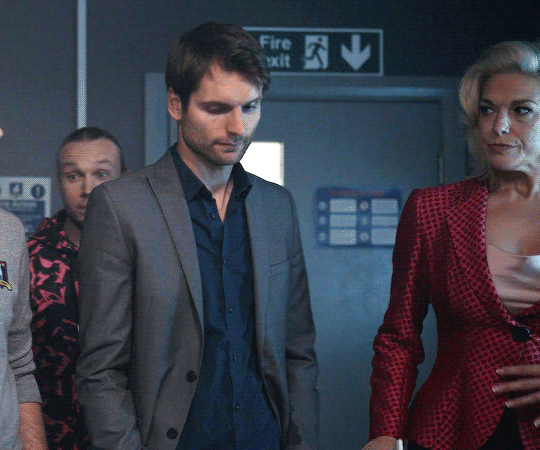

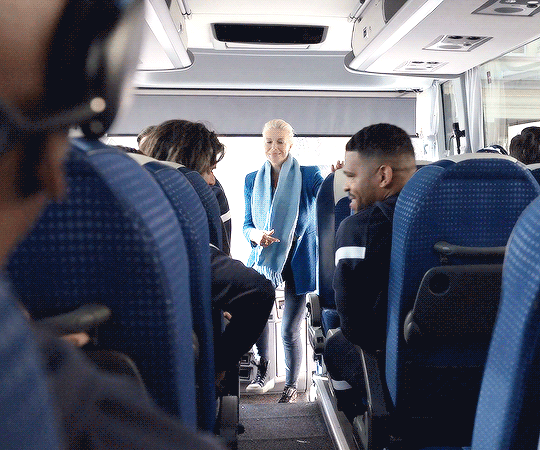


Ted’s reaction to Rebecca partaking in team business
#tedlassoedit#ted lasso#rebecca welton#ted x rebecca#tedbecca#hannah waddingham#jason sudeikis#my stuff#also! the contrast in rebecca's stance!#so awkward and outside of things in 1x06 so warm and comfortable in 3x06!#and the team's reaction to her as well! so hesitant in the beginning but so immediately warm now!#love!!
648 notes
·
View notes
Note
I would like to submit Rebecca Thane and the Black November from Mirror's Edge: Catalyst
ME:C is beautifully gloriously amazingly anti-capitalist and anti-authoritarian. The premise, the world-building, the protagonist, the antagonists, it's all so so so gorgeous in ways that might *seem* heavy handed until you look around the current state of the real world and realize it's just commentary. From the first moment to the last, the Authoritarian Dictatorship run by Capitalist Consumerism and Megabillionaire Families of the 'Meritocracy' is portrayed as wholly and unequivocally wrong and evil and cruel and threatening, and almost inescapable. Gorgeous. The game has its flaws to be sure, including a deeply unsatisfactory ending (they're trying to set up a sequel that never came, but execute it so badly that it leaves you feeling like the game you bought was unfinished) but overall it's one of those games where you can just spend hours immersing yourself into the world, and reveling in the clear and concise messages of Anti-Authoritarianism
But then there's Rebecca Thane.
For context, the heroes of the game are a group of rooftop smugglers who use parkour and free running to deliver illegal contraband to the citizens in secret. These missions range from "take these spices that we smuggled across the closed border and deliver them to a cook from a restaurant that uses them" to "sabotage the surveillance systems that monitor the city" to "distract the brutal police force so we can help this poor guy escape the city and rejoin his waiting family on the outside" sort of thing. The leader of the smuggler's group prides himself on his "neutral" stance; he's not trying to fight some dangerous war, he's just making things a little more flexible than the strict authoritarian government wants them to be. By contrast, Rebecca Thane runs the group of underground freedom fighters known as Black November, whose goal is to dismantle and overthrow the tyrannical system and win back freedom for all. Soooooo obviously they're all Violent Aggressive Evil Scary Terrorists who Bomb Civilians and try to Kill People in Cold Blood. <.<
the neutral leader of the smugglers ring has a history with Black November he's "not proud of" and he cautions the protagonist to stay away from Thane, and when the protagonist eventually ends up working with Thane and Black November anyway out of necessity, she and her friend are struck by the group's Scary Violent Tendencies and their habit of Going Way Too Far, and a good chunk of time is devoted to them trying to escape the group while acting like scared kids who got in way over their heads, treating the Black November as if it's twice as frightening and threatening as the government that has spent the whole game literally trying to murder them
The worst part is... it's all actually pretty well written! The tension you feel building throughout the story surrounding Rebecca Thane is great! It's really easy to get caught up in the emotions of the game; they did a great job of using their story to evoke strong emotional reactions. But they gave us the WRONG strong emotional reactions! The horror you feel when the bomb goes off is great! You just also wish that maybe it had been set off by the BAD GUYS, instead of the guys who want to fight the bad guys. The growing feeling of being in a really unsafe situation with dangerous volatile people who you have to work with in order to survive but want to leave as soon as possible because you get the feeling you won't survive for long if you stay, is wonderful! You just wish you felt that way about ANYONE ELSE but the group of people who are literally trying to liberate the city. And the vibe you get from Rebecca Thane, of somebody who is passionate to the point of instability and who could turn on you and kill you on a dime, is fantastic! You just wish you got that vibe from one of the characters who works as a lieutenant of the dictators, or perhaps from Dogen (a character who serves his own self-interest and is basically a gang leader who the protagonist owes a financial debt to and thus has to work for sometimes in an attempt to pay off her debt before he literally kills her) instead of from the one person in the entire game who is, once again, trying to liberate the city!
To make matters worse, Rebecca Thane is a black woman.
They designed a character who is a black woman leading a group of freedom fighters whose primary objective is to free the city from an Authoritarian Tyrannical Dictatorship that employs heavy monitoring and surveillance and Police Brutality to enforce their strict and ridiculously controlling laws designed to keep the people under their thumb... and wrote them to be Scary Violent Evil Volatile Dangerous Bomb-Dropping Murderous Terrorists who Go Too Far and are Too Extreme and Just as Bad as the People they Fight.
Thanks, I hate it.
.
14 notes
·
View notes
Text
Washington D.C: Day 1
Our first stop on our trip was to Lorton, more specifically the Occoquan Historic District. The Occoquan Regional Park is on the land where the inmates of the Lorton Work House Prison worked in the brick kilns. Only one survives today, but it gives you a look at what once took over the large park space by the river. After eating at the cute riverside spot Brickmakers, we walked up the hill to see the nearly complete Turning Point Suffragist Memorial. According to the park’s website, over 150 women were imprisoned at the Lorton Work House in relation to the women’s suffrage movement from June to December of 1917. The “Silent Sentinels”, as the monument described, were the women who peacefully demonstrated outside the White House, but were detained and charged with falsified information. Those charges led them to be imprisoned at Lorton or in the District of Columbia Jail. These brave suffragists, like Carrie Chapman Catt, Alice Paul, and Lucy Burns, were the sparks of change that paved the way for women's rights. Paul and Burns both endured much pain fighting for their rights, like with the notoriously long hunger strikes they would enact when imprisoned. The statues done for Paul and Catt are beautiful depictions and show their strengths as activists. Alice Paul is holding her famous picket sign, MR. PRESIDENT HOW LONG MUST WOMEN WAIT FOR LIBERTY, to greet you at the beginning of the memorial. After you have rounded out the beautiful garden path, you end with seeing Carrie Chapman Catt with a big bouquet of flowers to symbolize their success. While Paul took the more radicalized approach with Burns which they picked up from British suffragists, Catt was a peaceful activist who took a more amicable approach. Another interesting piece of the memorial was the original White House Fence from Wilson’s time in office on display. It was powerful to see the large black fencing these brave women stood in front of almost daily to fight for their rights. The goal of women’s suffrage never would have been achieved without all of these brave women.
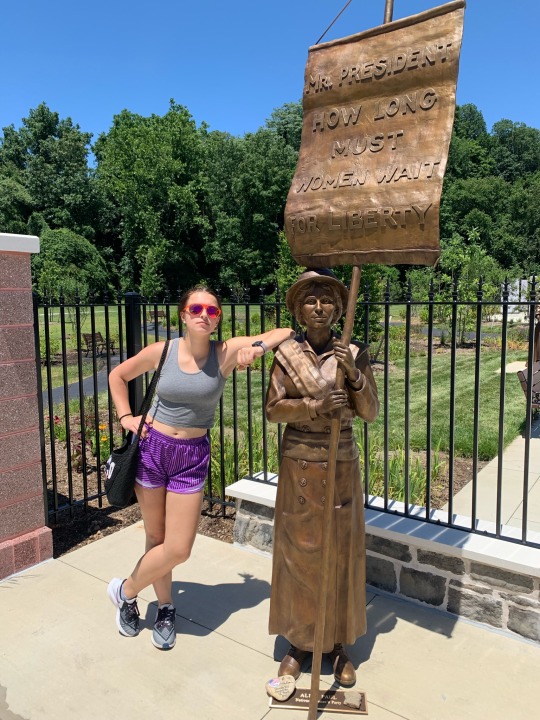
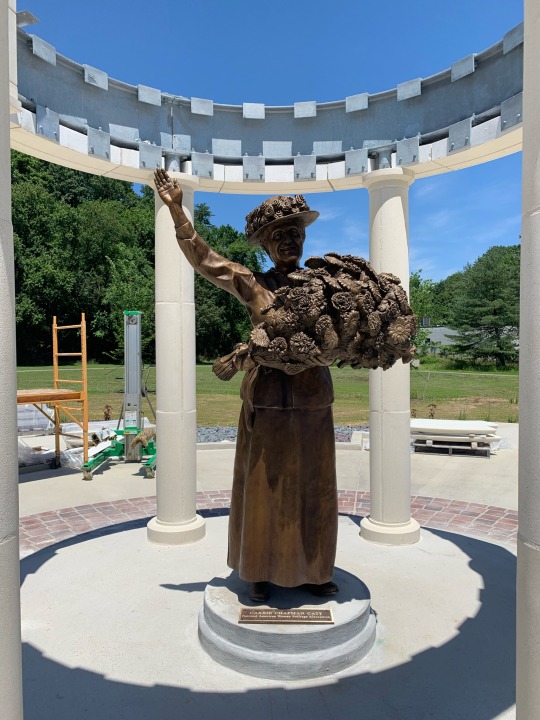
Unveiled in 1876, the Emancipation Memorial (also known as the Freedmen’s Memorial) has been controversial since its unveiling. Though the sculpture of Lincoln and a former enslaved person was funded by free African-Americans, there was some shock during the dedication ceremony in response to the deification of Lincoln and the stance of the African-American male. In his keynote address, Frederick Douglass expressed some criticism for President Lincoln. In the end, Douglass acknowledged an “earnest sympathy” for Lincoln. When talking about this statue in the spring semester, we knew that a stop at this memorial was essential. During a hot afternoon, Lincoln Park was packed with families with their children and their four-legged friends. We took a close look at the statue that has garnered more-recent criticism from activists like Glenn Foster of Palm Collective, who we were fortunate enough to talk to just a few weeks ago. Foster believes that a hidden narrative exists with the statue actively marginalizing African-Americans. “What does it mean for an African-American child to see the statue?” Foster asked. As we saw it with our own eyes, we understood why the memorial was so controversial. Though Lincoln’s Emancipation Proclamation freed enslaved persons in the South and made the cessation of slavery the goal of the Union during the Civil War, we were taken aback by the depiction of the man kneeling at Lincoln’s feet. It is problematic, to say the least, and requires a sign for historical context if the city does not take it down. Just across from the Emancipation Memorial is a statue that honors Mary Bethune. As a child of formerly enslaved persons, Bethune became a notable educator, civil rights activist, philanthropist, and feminist. She was the leader of many organizations like the National Association for Colored Women and was an adviser to President Franklin D. Roosevelt. She most notably started a school for African-American students in Daytona Beach, Florida, which became Bethune-Cookman University. Throughout the life of “The First Lady of the Struggle,” she never gave up in standing up for the right to improved opportunities for African-Americans. The Bethune monument, which was unveiled in 1974, stood in direct contrast to the feelings we had with the Emancipation Memorial. We may not know what should be done with the depiction of Lincoln, but it certainly requires some sort of action. Lincoln will always be one of the most consequential presidents of our history, but our society must be honest in interpreting his legacy along with that of African-Americans.

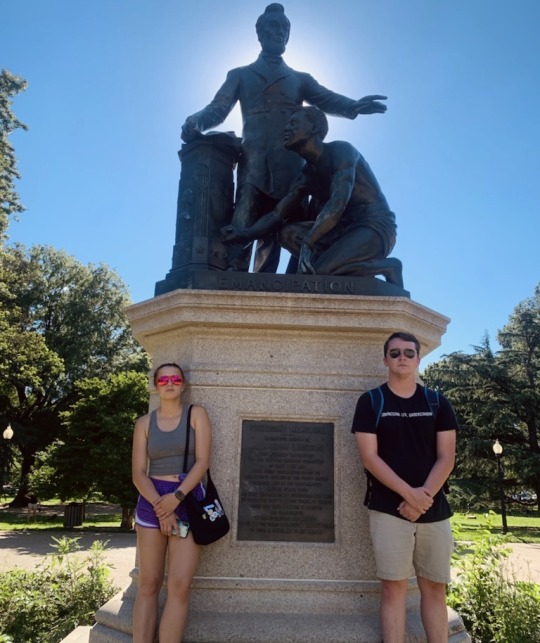
We took a quick ride on the Metro over to the L’Enfant Plaza stop to see the memorial for Dwight D. Eisenhower in front of the Department of Education. A statue of a young Eisenhower raised in Abilene, Kansas can be seen looking towards his future of being the General that commanded the D-Day invasion in Nazi-occupied France and the 34th President of the United States. All depictions of Eisenhower and his close allies during his time in the military and the Oval Office are beautifully done. The memorial shows the powerful presence that Eisenhower had in every role that he had. We made sure to also read through the speeches on the back of the marble pedestals, which included his famous farewell address where he warned of a military-industrial complex. During his presidency, Eisenhower sent in Federal troops to ensure the integration of schools in Little Rock, Arkansas. His largest project would be the Interstate Highway System, which has been the way that most Americans get around ever since. One can understand why Eisenhower is seen as a President of a higher echelon. We certainly did after viewing this memorial.

In response to the murder of George Floyd in 2020 and in support of calls for justice, Mayor Muriel Bowser of Washington D.C. supported the renaming of a section of 16th Street NW to Black Lives Matter Plaza. This section of the street is located at the Lafayette Square end of the White House. This action may have been a jab at the former president, who did not look favorably upon calls for police reform, but it was also a move to show that the city was listening and understood where people were coming from. The vast majority of protests were not composed of “thugs” and “looters” as charged by the media, but involved peaceful calls for ending police brutality and systemic racism. We were able to walk on the bright yellow letters that spelled Black Lives Matter. Though it has been over a year since most people were out in the streets of Washington protesting, the street still felt like a pilgrimage place for all Americans. Saying the words “Black Lives Matter” should not be treated as taboo and it is not claiming that other lives do not matter. BLM is all about the issue at hand, which is that African-Americans are disproportionately targeted by police, even when they are unarmed. Unwarranted killings and attacks by those meant to protect must end, and they must end now. As evidenced by our stop at this living memorial, the movement is here to stay and legislation must be passed in favor of fulfilling justice for all.


After seeing Black Lives Matter Plaza, we took a stroll to Lafayette Square just across from the White House. Just like BLM Plaza, this park is a social hub for tourists and residents alike. It was great to be able to walk upon this park to see the beauty of the White House up close. With the previous President, no one had been able to get very close for a while. Music, voices, laughter, footsteps, and the whirr of the sidewalk scooters filled the air. The beautiful weather made it an even better atmosphere. The one statue that took us off guard while enjoying the grounds was of Andrew Jackson. He is one of the most controversial presidents in American History. His fame originates from being a famous soldier in the wars against Native Americans. Later the “common man” became more popular as he was not an elitist running for president. Duels were something he took part in quite frequently as we have learned. Rebecca Grawl, an alumnae from Randolph-Macon Woman’s College and our tour guide for part of DC, told us that he actually had been shot at around 12 times and had 2 bullets lodged in him from previous duels. The worst part of his legacy was the Indian Removal Act of 1830 that led to the infamous Trail of Tears. Thousands of Natives were displaced, died of disease and exhaustion, and were forced out of their homes. Another one of his blunders was his dismantlement of the National Bank. It is ironic that the man who destroyed and hated the national currency of the United States resides on the twenty dollar bill. Another fact learned from Rebecca Grawl was that his equestrian statue is wrong. There is a rule for when there is an equestrian statue built for someone - the front two feet symbolize how the rider passed away. Two feet on the ground means that they died of natural causes, one foot off of the ground means they died due to an injury or disease from battle, and two feet off the ground means they were killed in battle. Jackson’s horse has two feet off of the ground, yet he was not killed in battle. Despite his title of being an American president and winning the popular vote three times for president, his legacy is troubling to say the least.

Our last stop for the day before heading to Shake Shack (YUM!) was the World War I Memorial. It is unfinished, but what is complete is absolutely stunning. A statue of John J. Pershing towers over the memorial representing his incredible military leadership of U.S. troops during The Great War. Beside his grand statue are maps engraved in gold, red, and blue on black granite with descriptions of each campaign. This is a place for reflection and education as many of those lost in the war may only have distant descendants living and those who visit are mostly coming to learn. The largest unfinished part of the memorial is right behind the small pool of water. A Soldier’s Journey is a large sculpture that follows a young male soldier through the “myth of a hero’s journey” from home, to the battlefront, and his return home where he is changed from the war. This part of the memorial will be complete in 2024 and we all are eager to return to see the finished product.
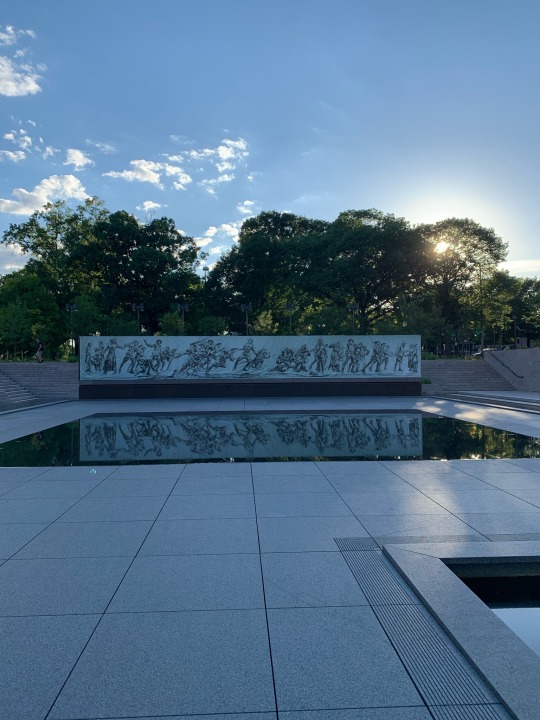

3 notes
·
View notes
Text
MSM and the Erasure of Identity
Selection from “The Trouble With “MSM” and “WSW”: Erasure of the Sexual-Minority Person in Public Health Discourse," by Rebecca M Young and Ilan H Meyer, published in American Journal of Public Health, July 2005.
Gay men, lesbians, queers, two-spirited people, and men on the DL prefer to use their own identity terms, but many contemporary public health writers prefer the terms MSM and WSW, ostensibly because these terms avoid assumptions about a singular, misleadingly coherent gay identity. In practice, however, MSM and WSW often signify not a neutral stance on the question of identity but a decided lack of sexual-minority identity. More important, by implication, MSM and WSW imply absence of community, social networks, and relationships in which same-gender pairing is shared and supported.
We are also concerned with the ways the terms have been racialized. As historian Allan Berube observed, “In the United States today, the dominant image of the typical gay man is a white man who is financially better off than most everyone else.”[20](p234) Just as gay and lesbian are often coded as “White,” WSW and MSM often implicitly refer to people of color, poor people, or racially and ethnically diverse groups outside the perceived mainstream gay and lesbian communities.
To understand how MSM is read, it is important to examine how explicit and implicit boundaries are drawn around the category gay. Consider, for example, a passage from Paul Farmer in which he claims that, in recent years, there have been fewer HIV cases than predicted among gay men in the United States, a category he implicitly racializes as White via the contrast with “injection drug users, inner-city people of color, and persons originally from poor countries in sub-Saharan Africa or the Caribbean.”[21](p47) He further excludes gay from poor and suggests that “males involved in prostitution are almost universally poor, and it may be their poverty, rather than their sexual preference, that puts them at risk of HIV infection. Many men involved in homosexual prostitution, particularly minority adolescents, do not necessarily identify as gay.”[21](p47) With this juxtaposition, Farmer seems to suggest that same-gender behavior among poor men of color (especially youth) is sex work rather than sex for pleasure and is devoid of identity and community; same-gender behavior among White men is read as synonymous with gay identity.
Compare these assumptions with a recent ethnographic report on men at risk for HIV in Dakar, Senegal.[22] While many of these “men who have sex with men” are poor and engage in sex work, the authors found that they have indigenous sexual-minority identities that are differentiated and socially meaningful. Senegalese sexual-minority identities serve as a basis for social organization, including, but not limited to, sexual roles. The authors describe ibbi as men who “tend to adopt feminine mannerism[s] and to be less dominant in sexual interactions,”[22](p505) whereas yoos are men who “are generally the insertive partner.” They also stress that the categories have “more to do with social identity and status than with sexual practices.”[22](p506)
Despite their careful attention to local sexual identities of men in Senegal, the authors referred to them in the title and elsewhere as “men who have sex with men.” With this usage, the rich information on identity is lost, with MSM conveying transactional, decontextualized same-gender acts. Ironically, applying MSM in this way universalizes a culturally specific phenomenon in much the same way that critics say does the term gay.
“We believe that the solution resides not in discovering better terminology but in adopting a more critical and reflective stance in selecting the appropriate terms for particular populations and contexts.”
#the trouble with MSM and WSW#msm#rebecca m young#ilan h meyer#hiv and aids#health and healthcare#terminology#identity#reposting this
3 notes
·
View notes
Note
The council always held distain for the Queen and her father. They were outsiders who had waltzed into their game of power and ruined it all. Every elaborate plan to get Chrom to grant them favors was now ruined. They couldn’t have Chrom marry their daughters if he was already married. They would just have to eliminate the Queen and her father. Their first attempt failed but it had the Queen on edge for a while. That was a while ago and since then she and Chrom had a second child and Rebecca had returned to her cheery self once again. Perhaps it was time to remind her that her safety was always on the line by killing her father. The council hopped that this would scare her so much that she would leave Chrom and the castle for good. The children were still young that if a council member’s daughter were to marry Chrom they wouldn’t pose too much of an issue. So they formulated a plan. They hired five assassins to kill Spartan-197. Surely they would have a numbers advantage, right?
Spartan-197 was out training in the sparing field where he had extra training dummies ordered as he knew that some would be destroyed by his training. He was half way during his CQC practice when he noticed three butlers and two maids approached him. He stopped to look at them. None said a word as they approached.
“Can I help you five?” He asked, cautiously looking at them.
He knew the servants would try to help him wherever they could but 197 liked doing things on his own. It was safer. These five didn’t look like they wanted to help him though. It became very apparent their intentions when they drew their weapons. 197 quickly took a defensive stance when they charged him. While they had a numbers advantage over him, he had the skill to negate that advantage. Blades clashed with armor, arrows fired to strike down the metal man but there was only ever one outcome. Spartan-197 had emerged triumphant. The five assassins laid dead on the sparing ground’s dirt floor. His armor had very faint scratches from the swords and arrows that had grazed it. Blood spattered in stark contrast against the navy blue color. His nanosuit also had some cuts where he got hit but other than that he was pretty good. A better training day than he normally would have with these training dummies. If he was attacked then someone might be attacking his son and daughter. He rushed to the gardens to check on them.
Fortunately, Chrom and Rebecca were just relaxing in the garden, enjoying the day with each other. Thomas sleeping in the cradle next to his mother while she gently rocked it. Rebecca looked at her father and immediately stopped rocking the cradle. She gave a shocked gasp and stood up, running to her father.
“Dad?! Are you alright?! What happened?!” She asked worriedly.
197 calmed his daughter and son down, letting them know he was alright. He explained that he was training in the sparing arena when he was attacked by some assassins disguised as some of the staff. He fought them and won but thought that the two of them might be in danger so he rushed over here. Rebecca panicked a little at the thought of more assassins being around. It was always a gnawing thought in the back of her head and now her father was attacked. Would they come for her next? Was their daughter or son in trouble?
Her thoughts were interrupted when she heard Thomas start to cry. He must have been disturbed by Rebecca’s yelling. She kept him close to her and made soft shushing noises to calm him down.
“Do you think there are more of them Chrom?” Rebecca asked.
i guess now we can send longer asks????? the only good thing so far dumblr. the only thing & chris is still after my life part lost count | @pieman1112

Luck was on Chrom’s side today for he did not have an urgent business to attend to so he decided to make the best of his free time and enjoy it with his amazing wife since they both had been busy dealing with the inside and outside matters of this country. He finished up any paperwork he had to sign, letters, invites, etc and asked no one to disturb him unless it was really urgent because he is taking the day off to be just . . .Chrom.
Finding Rebecca was not hard at all so Chrom had planned some quality time for them at the garden. He wanted something outside of the castle but hey he cannot leave baby Thomas alone, especially when he is still a baby so he had to remain inside of the castle. It is not bad, actually. The time he spends with his time is the same time he spends with his children, too.
Chrom guided Rebecca to the garden while carrying Thomas and Lucina running ahead of them, singing some nursery rhymes about sheep and shepherds. Ah, how cute~
The two talked for hours and hours about everything; sharing what happened with them so far, silly instances, memories of old time and childhood, literally anything that comes up to their mind. Lucina would chime in with her singing and dancing then switch to imitate Chrom and Spartan moves, rolling on the ground like how Spartan would do, slashing through the air like Chrom’s sword movement and starts mimicking how Rebecca treat the wounds. She was a delight to the eye. Thomas on the other hand, shares his giggles and occasionally cries every now and then.
“So, yeah. I think for the next couple of weeks Emmeryn did not let me bath on my own after drowning in the tub haha. It was until Frederick reassured her that he would keep an eye on me whilst it happens again. It was funny...and depressing. Frederick made EXTRA sure I am prepared to take my bath--have you seen someone put a stool in a tub? That’s Frederick. The water did not even reach half of my stomach. Heh...they are both were worrywart.”
And as soon he finished reminiscing about the past, Spartan came in rushing to the garden as if he fought death--blooded. To that, Chrom quickly got up of his chair, knocking it to the ground and rushing to his father’s side. “What happened!?” following Rebecca at his side.

The news of the assassin dropped heavily on Chrom. So . . .they have not given up, yet huh . . .Gods...what is he supposed to do? He cannot issue a full discharge to all the counsel members---some are actually good, hand picked by Maribelle and Libra to represent the two parties. But the other party who he could not deal with them at the moment are irreplaceable despite how dirty they play. He hates them but he cannot lay them off or Ylisse will suffer the outcome. He has to work faster on cultivating the new system where people like they don’t control a lot of power and asset in this country. His father fucked things up after leaving the country for that crusade and letting anyone with money control the life aspects of this country. His sister did her best to return some peace to this land but at what cost? As soon people find a loophole they will use it.
As Spartan explained what happened, Chrom was lost in his thoughts. He should consult Maribelle about this and fast. She is the only one who he can leave something as this to her--being a magistrate and all. Surely she can find a way to counterattack this relentless attack on his family . . . or god only knows what he will do to make them stop. If he had to do it himself, he will. Everyone should know that if wishes for it, what his father did would be nothing compared to what he is capable of. It is not something he proud himself of but he knows better than anyone the demons lurk inside of him and could break loose if something were to happen to his family.
He lost one and her loss still hurts him EVERY day.
He will not lose anyone else anymore.
He will NOT.
To Thomas’ cries, Chrom snapped back at the reality in front of him. Ah...Right. When Rebecca asked him, Chrom for a second felt his brain blank out. He told her everything will be alright and none of that will happen again when she was attacked a year ago but there they are . . . attacking them again.
“I’m sorry . . . I promised it would not happen again but ... “ he thought his last warning was enough--cutting some funds on the parties involved was supposed to work, right? Guess not . . .
He felt powerless again. The feeling that he hated more than anything in this world is back to gnaw on him.
“But I promise that THIS will be the last time . . . “ he eyes shone differently for a second. Chrom gently caressed Thomas’ cheek and then cupped Rebecca’s cheek. “Will you stay with Hunter for this day? I will go sort this out, okay? Don’t leave without him--I trust this is alright, yes?” he looks back at Spartan. He looks back at Rebecca again, “Don’t worry. I won’t be long a day or two to get everything done.” Chrom leans to kiss Thoma’s forehead and then kisses Rebecca’s lips. Lucina hurries up when she spots Spartan but she was stopped by Rebecca to not get herself dirty by the blood, telling her it was a red paint. Chrom crouches down and whisper something to Lucina’s ear only, “Protect mama in my stead okay? Daddy is going to beat some bad guys, alright?” and a kiss to her forehead as she giggles and tell him that she will do her best, striking a very heroic pose. With that, he walks out of the garden and sends a messenger to Maribelle that he is coming post haste to discuss something private.
#pieman1112#⚔ic.⚔ (let my action prove my worth)#⚔verse.⚔ (the sky travelers)#⚔answer.⚔ (final answer)#[[dabs.#[[heck yeeeeeeeeeeeeeeeeeeeeeeeeeeeeeeeeeeeeeeeeeeeeeeee
1 note
·
View note
Text
Senate and Legislative Action
1. Lawmakers Positions
- Rebecca Bauer-Kahan Based on Rebecca Bauer-Kahan’s recent actions listed in her Press Releases pages, she is mostly focused on the recent power outages and communication with Governor Gavin Newsom abut them, working for the improvement of the environment, and protecting students from money hungry online colleges. Assembly member Kahan presides over a very affluent district with fortunately little to no corruption so there are not many issues in her area which involves police brutality and corruption. This is why her website does not show her stance on the issue of police brutality and she haven't sponsored any bills
- Steve Glazer Many of the issues that Steve Glazer is focusing on right now are on a similar scale as those of Kahan. For example, some of the issues currently at the front of his list bases on his press releases are on the BART issues, also student freedom, and the electrical grid. Glazer also does not have much action on the police corruption issue because in his district it is not as much of a problem as it is in other places in the United states. Although police brutality and corruption is a State issue because the police are controlled by each state or even closer in districts so police reform would come from the more local governments. However, it could also come from the national government as a an executive order or a federal law. One bill he sponsored from his legislation page that kind of involves my issue is a Restorative Justice bill which allows the offender and victim to agree on a punishment as an alternative to incarceration.
2. California Bills a. SB-230 b. Introduced on February 2, 2019 c. On August 13, 2019, the bill was chaptered by the Secretary of State d. Yes I would encourage my senators and representatives to support the bill because it requires each policing department to send specified information on their use of deadly force the part year to the Department of Justice. This is good because it requires the departments to take responsibility for their actions and be open about it if they ever use deadly force, and it also makes the individual officers responsible as the department has to investigate complaints about certain officers who use deadly force.
3. Congressman and Senators
- Mark Desaulnier Representative Desaulnier does not have information in his issues page the explicitly states his stance on police corruption, but in his Civil Rights section he states that there is no equality until everyone is equal so he will keep fighting for equality under every aspect of life. Since much pf police brutality involves racial profiling and unequal protection under the law, it can be inferred that Desaulnier would support any bills which require police reform. Currently, it does not look like there are any bills relating to this which are sponsored by representative Desaulnier.
- Kamala Harris There is no information of Police Brutality on Kamala Harris’ Website. The email I sent her relating to this issue reads:
The Honorable Kamala Harris,
The issue I am concerned about is police brutality and corruption in California. I am currently a senior at Acalanes High School and I am researching this issue for my Government class. I am asking about this issue because it has always been a very pressing topic in America, yet not many politicians in California have their stance on this problem listed on their website. This may be because, fortunately, there is not as large of an issue regarding police corruption in California in contrast to other states in America. However, there are still instances of police brutality in California so I would appreciate it if you could clarify your stance on this issue and how you would act to reduce instances of police brutality. Thank you so much for your time.
Sincerely, Ismael Ali
- Diane Feinstein There is also no information on Feinstein’s Issues page on her website that regards police brutality and corruption. The email I sent her reads the same as the one I sent Senator Harris except addressed to Dianne Feinstein.
4. National Bills
After scrolling for many minutes on the Police & Crime issue page on countable.us., I did not find a single bill relating to police brutality and corruption.
2 notes
·
View notes
Text
Crazy Ex-Girlfriend Theme Songs - Worst to Best
With the series winding down and only a few episodes to go, I wanted to look back at the shows four theme songs and share my thoughts. And given how there’s only four of them and lists are fun, let’s make it a worst to best list.
So enjoy...that!
4. You Do/You Don’t Want to be Crazy
youtube
I’m sorry to start this list on a downer, but from the moment I first heard this song, I hated it and that has not changed one bit since it initially aired. Musically and lyrically, it’s ugly, not having a central beat of its own and changing five times in the span of thirty seconds. The four personas relate to Rebecca’s feelings vaguely at best and are more a reflection of society’s views on craziness, giving it an unavoidable distance from Rebecca that the other theme songs just don’t have. it’s too short to really take form in the way the show wants it too. But most importantly, while every other theme song reflects the feelings of Rebecca consistently as they pertain to the entire season, this song only reflects Rebecca during the season’s first four episodes. Following that, Rebecca’s stance on craziness is simply that she doesn’t want to be crazy, but because she takes her diagnosis as “crazy,” it’s something she has to deal with. And any positiveness that comes from her diagnosis is not understood in the show in the same way as it’s understood by the two personas who are for craziness. I will say this though: The sets, costumes, and visuals are fantastic, selling the respective tones they’re going for flawlessly. I just wish they weren’t in this song because they’re so detailed and cool! They all deserve their own numbers!
3. Meet Rebecca!
youtube
Okay, now that that burst of negativity is out of the way, let’s get positive! I think the writers of this theme song really knew what they were doing here. Rebecca’s personality throughout not only the entire season, but in the series as a whole is infused in this song. The complexities of Rebecca’s character -- not just sweet, generous, snarky, sarcastic, but ultimately, like Rebecca herself, too hard to ultimately summarize with just a handful of words -- is both funny and makes for a good introduction to the character (Ultimately what a theme song hopes to accomplish). We see her insecurities as it shows how she’s compared to someone cooler and who seems to have her shit more together. And what I like the most about this theme song is its ending. Not only are other Rebecca’s lines hilarious and something that keeps the theme song fresh every time, but there’s something deeper to it as well. We see this ideal other Rebecca deconstructed from the ultimate cool girl ideal she is set up to be with every building episode while simultaneously through both the theme song and show proper making Rebecca a more complicated and nuance woman -- making her the actual “cool” one of the two. The costuming also shows this contrast -- Rebecca’s colors are a dark and brooding blue (Something normally classified as a cool color, showing a bit of subtlety for the changes that these women undergo as to their portrayals by the theme songs) while other Rebecca is wearing more of a conventionally cooler bright red dress) Finally, the music itself is great -- borrowing from sitcoms from the 80′s and 90′s. The use of horns as well as the introductory nature of the lyrics is a nice callback that completely works and paints the series as the more complex comedy that it is.
What are numbers 2 and 1? Go below the cut to find out because this is getting a lot longer than I expected!
2. I’m Just a Girl In Love
youtube
This is another theme song that I didn’t like upon first hearing it, but that’s more the fault of me loving the original theme song and being given no warning that it would be changed every season. And over the course of the season, it grew on me and by the end of the season, I was regularly singing it and even made a cute video of Trent’s equivalent to the song with my puppy! But anyways, let’s talk about the song itself. This season is very much a spiral for Rebecca’s character and this song perfectly incorporates the uncomfortable feeling both the audience and her friends have because of it. The music is a callback to the old classical musicals that Rebecca loved growing up and to basically one episode ago. Betty Boop always comes to my mind because of the uses of pink, black, and red all throughout the number as well as the 20′s dresses. The lyrics are perfect in that they are a list of how NOT to handle love and they retain this amazing level of absurdity throughout the song. Additionally, I love the focus on the backup dancers during the final few lines of the song, showing a level of disbelief and possible panic on their faces as they sing a song they know isn’t true. AND I like the foreshadowing that comes from Rebecca literally breaking Josh’s heart through her spiral. But the most important point for me is how the theme song was incorporated into the show. While in the first season, that incorporation was played as a joke, that could not be more turned on its head for the second season. Those lyrics are more than just ones she created to cement her love of Josh, but are callbacks to excuses Rebecca’s mother made for her after it was revealed that Rebecca was a former arsonist, the biggest twist of the show by far. The lyrics to an already disturbing, albeit bouncy song become downright horrifying with this revelation and something we enjoyed to a large extent now kind of makes us sick, but in a really good and complicated way! And it makes going back to this song equally complicated and therefore leaves the longer lasting impact.
1. Crazy Ex-Girlfriend
youtube
...So throughout numbers 4-2, even when I had bad things to say about the songs, I still HAD more to say about them that was more than meets the eye (pardon the reference).
Buuuuuutt here’s the thing: I don’t really have that for the initial theme song, or at least, not as much as I did for the previous two theme songs mentioned.
So why’s it number 1?
I really tried to justify to myself to put “I’m Just a Girl In Love” as the top spot. It definitely would’ve made me seem smarter for the points made about the number as a whole and would make this list seem more objective than my current choice.
Ultimately though, I couldn’t. But still, let me explain myself, if you will for why I love it.
��Crazy Ex-Girlfriend” (the song, not the show) is very much “what you see is what you get,” but what you see is pretty freakin’ great!
First, I love the visuals. I ADORE cartoons, the animation for the theme song is simplistic, but clean and fluid all the same. Greg, Josh, Daryl, Heather and Paula look cute in their cartoony designs. And hey! The visuals say a lot about Rebecca’s more simplistic viewpoint on the decision to uproot her life and move halfway across the country, so there’s a hot take for you! The cartoon visuals lack dimension, whereas Rebecca doesn’t, making her the only three-dimensional character in an otherwise two-dimensional world in her more subconscious opinion (I can’t see her consciously thinking that about her friends). It makes her journey to West Covina seem like more of a fairy tale or a sitcom than the big and somewhat consequential choice that it was and has the added bonus of deconstructing that lack of dimension throughout the season.
Second, I love the line “the situation’s a lot more nuanced than that.” I love the line so much that it’s my blog’s header! It’s all at once foreshadowing for the underlying deepness of Rebecca’s character pertaining to her past and insecurities, an excuse that she makes up for being confronted about a very simple yet gigantic life-altering decision made for awkward at best reasons, and a promise to the viewer that the series beyond just Rebecca herself is more nuanced than the title gives it credit for. Besides being a musical, I hear that people are drawn away from this series because of its title, and I think the writers of this song were deftly aware of that. So this singular line -- not sung -- is a plea for new viewers (Something this song can reasonably expect given that its in its first season) to give the show a chance to say more than it initially appears to. That’s honestly downright bold of a show to do and I admire that level of self-awareness on display!
Third and finally, I honestly just like the song. There’s a fun upbeat rhythm to it that I just love clapping along to. The lyrics are fast and get across the general idea of the series in an exciting way. It’s kind of like being on a short but sweet roller coaster. It starts out exciting with the buildup and drop (The story of how Rebecca got to West Covina) and then chugs along the rest of the track, but in a fun way (The lines about how Rebecca’s a crazy ex-girlfriend). it’s the song I sing along to the most and is nice to come back to as a seasoned viewer because -- hey, look how far we’ve come!
()()()()()()()()()()()
So that’s the list! What did you think? Let me know because I literally ALWAYS want to talk about this show and I can’t wait to see how it finishes out!
Anyway, nothing else to say but...BLAM!
#crazy ex girlfriend#cxg#rebecca bunch#rachel bloom#crazy ex-girlfriend#theme songs#worst to best#jenna ranks stuff
16 notes
·
View notes
Photo





“Claudia, honey, I didn’t know you’d started over.” regret in coming to graduation was already strong. Sure, she was receiving her diploma too, but that didn’t mean she abundantly needed to be there. The piece of paper could have been mailed. She could have, and would have, soaked up a few more added hours of sleep. Yet here she was instead, poured into a low cut white lace dress that contrasted well with her newly chopped red locks. The woman who stood close to Dusin’s mother was a mirror image of the younger woman they were graduating with. Max could only assume that the woman who’d walked over with a big fake warm hug for Claudia was Rosa Luna. Carmen’s mother. “My Carmen’s been waiting years for that son of yours to notice her.” oh jesus christ. “Look at these little angels.” she shrugged the denim jacket off, throwing a look of annoyance to Derek as he offered her amusement. “They’re just darling. And you… you look wonderful.” she and Derek held a silent conversation as Rosa continued to fuss over Claudia. She loved the man whose ring Claudia held. He was by far the best father figure that she or Dustin had ever had. Not to mention he’d brought Abigail and Rebecca into their lives. There was almost nothing better than spending the evenings listening to the two of them bicker over who got time with their nieces just so that Max could catch a couple extra hours of sleep or spend some time with the boys. “Hey Dust, your mom’s over here laying claim to your work.” Derek called out as a gaggle of bodies entered the gym. The boys. Finally inside from a last minute hit before the graduation ceremony actually started. Before they had to sit still and listen to too many names being called when all they really wanted to do was get out in the sunlight and spend the evening free of ever having to enter the building to learn again. Lucas was the first to walk over, an arm thrown around her shoulders, a kiss pressed to her cheek, “Lookin’ good, Slut”. She left a careful gloss mark on his cheek in return. They’d come such a long way since their fights post breakup. She couldn’t imagine what it would be like if he still held the ridiculous hostility towards her. The next was Mike, a peck dropped to the middle of her forehead. Since the night he’d found her nearly unresponsive on her bedroom floor their repertoire had been protective sibling outlooks, “D’s got the dark circles and you have nothing. Good, keep making him get up with her.” she heard the groan beside her, not that it was by any means true. If one of them woke up, they were both up. She could feel the effect of the sleepless nights even if it was feigned that no one else could see it. Last was Will. His quiet exterior around crowds would only fall once they were in the confines of their own space. Instead, he pulled her into a bear hug. Tight enough to make them both stop breathing for a moment. His way of reassurance that he was fine, she appreciated it. It was finally the last set of hands on her, the ones that wrapped around her waist, the chin that bent enough to rest on her shoulder before dabbling a small kiss to her collarbone, “Mom, you’re beautiful. But those two? Definitely too cute to be yours.” One hand was taken away from his stance as he reached out and grabbed ahold of Derek’s bearded face, “Even if you did marry a very pretty looking man.” Dustin teased, puckering his lips at his stepfather who was fully used to his antics. This shouldn’t have been the aura given off at high school graduation around someone who’d fucked up twice in the span of two years. But as Claudia would say it, accidents happened. “Wait a second, Dustin, is one of these little ladies yours?” Apparently Mrs. Luna was slow with the uptake. Max let her head fall back against his shoulder, her eyes shutting for a moment. Here it came, the look down about teenage pregnancy. One of the many reasons that she would have happily skipped out on graduation. Having to defend it happening not once, but twice? It was their business and no one else’s. “You know, Carmen is great with kids.” what the shit. ...what was it going to take? “Oh, wait, Mrs. Luna. I don’t think you’ve formally met Max.” she groaned and hoped that she’d kept it under her breath. “She’s graduating 6th in our class. Would have been 5th, but I may have played an unfair card and knocked her up again to gain that one point lead.” she watched as Claudia’s head dropped into her hands. “She also happens to be my girlfriend and the mother of these two perfect little monsters.” she probably should have expected him to lay it on thick. “Max, this is Carmen’s mom.” one of the many reasons she loved him or whatever. Silence settled in the middle of everything. “Dada” unlike her father, Daylin always seemed to know how to save the day. The sleepy 18 month old’s eyes had popped up and her little features had settled on the crowd around her. With no surprise to max it had been Dustin that she’d asked for first. It was always Dustin that she went to first. Not that Max had an issue with it. If anyone could replace the way she’d viewed fathers (they way they both had) it was Dustin and his girls. “Oh forget about him.” Lucas had pushed his way closer to the stroller, his hands were out and a second later he was pulling the little girl in the blue floral dress into his arms. The boys always found themselves in a tug of war over their niece. That had been the last thing she’d expected of them when she’d noticed her period to be late. When she’d ever been admitted to the hospital while they were on a camping trip, the boys (after their initial shock over Dustin being her chosen cohort) had taken their turns sleeping beside her in the hospital bed and later on sitting beside Day’s incubator in the NICU. “Your favorite uncle is here to rescue you from these losers.” she could deal with the taunts. “Shitbag. Don’t spread your bullshit. Give me the baby.” Mike motioned as the typical tug of war began to commence. A throat was cleared a moment later, breaking the commotion, “Lucas, Michael… the four of you best get up to the front and hand over that little girl. I don’t want to hear no complaints from any of you.” Mrs. Sinclair announced as she plucked the tiny Henderson from arms. It was chaotic and always full of life. In a different way than it had been five years ago when Max had first gotten to Hawkins, when death and destruction hung in every corner of her life. A switch had flipped before the girls had been born, when she’d started pulling down her walls and letting D in. Sure, the whole thing was unconventional and in many eyes would have been wrong. Her hand wrapped around the pendant around her neck, the one that had at one point belonged to her brother. The only thing that would have made the moment better would have been having Billy there. He never would have been good with the girls existing, but they would have melted him on contact. It was a thought she’d always live with and one that he’d never know.
0 notes
Text

Approaching the Right to a Healthy Environment through Analysis of Economy versus Environment in the Works of Hayao Miyazaki
... authored by Elijah Bergevin, assigned by Dr. Rebecca Pearson for her course The Right to a Healthy Environment
1.1 The Right to a Healthy Environment
The right to a healthy environment is an ideal under which human necessities -- and to an extent ecological well-being -- must be guaranteed through the establishment of systems which protect those necessities, make them available, and bring justice upon harmful contrarians. In the United States, citizens and industries are expected to preserve fair standards of clean air and water which are set by the Environmental Protection Agency. Legal action can be taken against parties which may abuse such standards. However, the US government is not held accountable to consistently address situations of polluted resources, nor is there any individual environmental responsibility expected of its citizens. (Boyd, 2012) Additionally, EPA “fair standards” are often disputed for their lack of the consideration of the most current scientific conclusions in health and environmental studies. In a true legal sense, the right to a healthy environment does not exist whatsoever in the United States for it has yet to be constitutionalized into the Bill of Rights. This is true, in fact, for a large proportion of countries on earth; 46 of 193 have absolutely no environmental provision in their founding documents today (Boyd, 2012). Therefore, nearly 25% of sovereign nations do not maintain the right to a healthy environment (although legislation may exist to provide some structure).
1.2 Environment vs Economy, Humanity vs Nature
An overarching theme in the fight for environmental protections, and the right to a healthy environment, is that of environment versus economy. In a political sense, this subject entails two distinct perspectives: 1) industry cannot remain competitive and successful if business is limited in ways to preserve the environment and natural resources, and 2) economic prosperity and environmental sustainability are not adverse concepts but very possibly mutually assuring. The primary stance is inarguably the dominant one in the majority of the western world, though there is nuance to the debate depending on context (Smith & Parsons, 2012).
Take for example, the developmental state of a nation. In global efforts to reduce climate change, developing countries usually show resistance to environmentally-preservative economic limitations as they “struggle to achieve basic material security” (Running, 2014). Natural resource extraction and short-term cheap systems of waste management may in fact be the only means of establishing meaningful GDP. In fairness, these same countries are usually responsible for a smaller portion of climate-changing sources, such as greenhouse gas emissions. However, they also carry the heavier burden of risk surrounding consequences of climate change as found in Katrina Running’s article “Towards climate justice.”
In contrast, more developed countries may contain politicians which tow the line for sustainability in industry, yet with larger corporations involved in the market of said state, it can be difficult to find legislative action which satisfies the government and those businesses employing its citizens. More specifically, in countries with flimsy protections controlling industry involvement in politics, it is all too normal for big-business to influence representatives, shape legislation, and thereby circumnavigate citizen positions on issues like sustainability and climate change. As US Representative Alexandria Ocasio-Cortez recently eloquated in the House Oversight Committee, any US official can legally campaign funded entirely by a special interest group, such as oil, and once elected be unlimited in their ability to deregulate laws around that industry for the gain of individuals and at the expense of the American people and environment.
Beyond this political framing of economy versus environment, there also exists a more loosely and artistically described parallel; humanity versus nature. It is a particularly pervasive ideal that, in the modern west, human activity and culture exists outside of the scope of nature (Smith & Parsons, 2012). The world around us, by this thinking, is but fuel for humanity to use for progress. However, this is shallow and historically uninformed rational. It is a rather recent development that humans have cultivated the ability to single-handedly control the resources of this globe and shape the nature of all other species’ environments. (Carson, 2015) Throughout the centuries, there lie examples of mankind contributing to a ecologically diverse settings, such as during the Edo period in Japan. There, human involvement in “the constant collection of leaves and wood kept the forest open and prevented succession to large trees and dense shade.” (Chan, 2015) Thus, we can observe the human role as a important part in the grand performance of “nature.” It is the challenge of today’s greatest minds to understand this relational truth and reintroduce the concept to the general public. This gauntlet of enlightenment has been championed by many scientists and activists, but it has found a particularly successful home in the hands of artists, such as those of Hayao Miyazaki and the Studio Ghibli team.
1.3 Studio Ghibli
Hayao Miyazaki was, until his recent retirement in 2013, the director of the Japanese animation company Studio Ghibli. The studio has produced a large collection of full length anime films, as well as an array of short specials, television series, and visuals for video games. These works are known worldwide and have received critical acclaim throughout the decades of the studio’s existence. Although each piece is complete and unique, there are undeniable themes which permeate all that Miyazaki touches: self-discovery, magic and fantasy, but most importantly environmental awareness and deep ecology. Miyazaki was profoundly moved by the reading of Sasuke Nakao’s book The Cultivation of Plants and the Origin of Agriculture from which Miyazaki reformed his Japanese identity and ideas on the human-nature relationship (Mumcu and Yilmaz, 2010). Nakao describes a similar early culture between peoples living in evergreen forests which is referred to as the “shiny-leaf culture” (Yamanaka, 2008). Under this lifestyle, “people depended on the forest and were anxious to coexist with it rather than destroy it” (Mumcu and Yilmaz, 2010). It is no surprise then that, owning this new self-enlightenment, Hayao Miyazaki flew into the scene of film production with his primary work Nausica and the Valley of the Wind (1984) which details a post-apocalyptic world overgrown with toxic forestry. The following year, Studio Ghibli was founded in full, and each film after has proudly touted motifs of environmental sustainability or irresponsibility, harmony or dystopia.
It is worth mention that a majority of Ghibli entertainment is marketed towards children and young adults, as is the dominant trend in the medium of animation. This is not inappropriate as many of the films feature younger protagonists, non-complex narratives, and bright visuals. However, to restrict intended audience to children is to ignore the ramifications these pieces may have upon adults. Michele J. Smith and Elizabeth Parsons write in their article, “Animating Child Activism” how environmental media “may function as a sop to the idea that it is now too late for adults, already entrenched in their lifestyles and beliefs, to adopt the challenge of changing themselves. Such a logic of displacement, or even the passing off of responsibility to the next generation to care about the environment, is perhaps one adults are reluctant to embrace in political and lifestyle choices.” Such is to say, the existence of pedagogy to involve and impassion young children in the fight to save their own future on this planet does not bar adult consumers from finding meaning and purpose in the same art to alter the status quo and create change for themselves as well as posterity.
1.4 Why this?
In this study, various productions of Hayao Miyazaki and Studio Ghibli will be analyzed as mediums to approach environmentalism and the right to a healthy environment. Why address such lofty political and human rights issues in this manner? Succinctly, average citizens are uninformed or misinformed about the processes and rights relating to the environment. At Central Washington University, one survey revealed that only 27.3% of 110 participants were correctly informed on both the lack of the US right to a healthy environment and the EPA’s shortcomings in setting current health-science-based standards. But this is no indictment; the simple truth is that many people are not faced with the everyday realities and outcomes of poor waste management, excessive energy use, or irresponsible resource production. They are unaware of the role they play in the human-environment relationship. The same Central Washington University study found that a majority 65.3% of 49 students did not utilize reusable cutlery despite its general availability on campus. Instead, disposable plastic options were chosen, and added to the 32 million tons of plastic discarded each year in the United States. Those utensils then sit in landfills, unable to biodegrade, or are burned producing greenhouse gases and nominal energy output. (Gourmelon, 2015)
Even knowing such information -- as some of these students presumably do -- it can be difficult to interpret the immediate and personal costs of unsustainable actions, despite their impending existence. Research conducted by the National Round Table on the Economy and the Environment found in Canada concluded that climate change will soon present huge financial burdens to Canada and those costs “could escalate from roughly $5 billion per year in 2020 … to between $21 billion and $43 billion per year by the 2050s” (NRTEE, 2011). Cheap and disposable solutions now, will create complicated expensive problems later. This is where the disruptive aesthetics of design activism, such as that of Hayao Miyazaki’s, becomes valuable. As Melanie Chan writes in her article “Environmentalism and the Animated Landscape,” “Indeed [Miyazaki] films invite audiences to identify with different locations and characters, and more specifically tensions between animism, technology, and political power, in order to develop an emotional connection to the environmental concerns they represent.” Narrative media provides a human and accessible gateway to realizing systemic issues and plausible justice. It is therefore appropriate, and furthermore responsible, to analyze how Studio Ghibli invokes the human right to a healthy environment through its representations of economy and environment, humanity and nature.
2.1 Ponyo on a Cliff by the Sea
Ponyo on a Cliff by the Sea (2008) was a co-production of Studio Ghibli and Walt Disney Animations Studios. The film follows Ponyo, a supernatural daughter of the Ocean, in her adventure far from her home of the deep sea. After escaping the watchful eye of her father, goldfish-like Ponyo finds herself in a terribly polluted human harbor where she is swept into a drifting glass jar and washed ashore. Sōsuke, five-year-old son of a local sailor, discovers Ponyo and, upon feeding her some ham, transforms the minnow into a little girl. Ponyo’s father, the sorcerer Fujimoto, is appalled to learn of this change when he realizes that Ponyo has abandoned the ocean for the likes of humans, whom he knows only as destructors of nature. In his ultimate attempt to retrieve Ponyo, Fujimoto -- and his love, the Ocean -- elect to flood the earth. The town, in a single night, is leveled. Ponyo and Sōsuke are separated from Sōsuke’s mother and embark on a journey to find her. However, the Ocean locates Sōsuke’s mother first and strikes a deal: all damage will be reversed and Ponyo may remain as a human, but only if Sōsuke promises to love her forever. The boy agrees, and the film ends as the waters recede.
It is necessary to clarify that Ponyo does not immediately present itself as a flaming gauntlet for environmental reform. At first blush, Ponyo is about the wonder of the sea and the innocence of young love. Deeper analysis reveals more meaningful themes and calls for action against environmental pollution and irresponsible waste management. The assault on Ponyo by marine litter is the catalyzing event of conflict in the film. It is by this product of human carelessness that nature is quite personally harmed. Miyazaki moves from this moment to represent the autonomy of nature in the bodies of Fujimoto and the Ocean goddess. The two supernatural forces shift from corrective powers, purifying and protecting the sea, to avenging entities, punishing the earth for the abuse of their waters and the “capture” of their daughter.
This context parallels loosely to current issues of marine life damage. In 2010, an estimate of 4.8 to 12.7 million metric tons of plastic made its way into the ocean. Currently, there is little evidence to support that human non-biodegradable waste in oceans are adverse to the biological health of marine organisms such as fish and birds. However, there is concern how the presence of such debris might restructure ecosystems by altering feeding practices or disabling species activity. Kara Lavender Law communicates some examples in her article ‘Plastics in the Marine Environment;�� “95% of 1,295 beached seabird carcasses in the North Sea contained plastic in their stomachs... and 83% of 626 North Atlantic whales examined in 29 years of sighting photographs had evidence of at least one entanglement in rope or netting.” In Ponyo, we are presented a visual and empathetic representation of this quandary as the goldfish-human is swept up in a garbage-trawler and caught in a glass jar, thereby separating her from her habitat and undeniably altering her life.
Rising sea levels are an another issue addressed by Ponyo. Industrial pollution and greenhouse gas productions have worked over the decades to increase global temperatures, specifically in Earth’s oceans. (US EPA, 2016) This heating is a likely cause of sea levels rising by an average of six hundredths of an inch each year since 1880 up until 2013. Rising waters have had tangible effects with global land loss, including the loss of twenty square miles of US coast to the Atlantic ocean since 1996. (US EPA, 2014) The flooding of Sōsuke’s harbor village is an extremely accelerated depiction of such land loss. These two human-environment relations of ocean pollution and rising sea levels in Ponyo are interesting in their different involvement of truly human characters as well as their aesthetics. While rising sea levels most definitely damage the state of Sōsuke’s home, the polluted waters of the harbor are not depicted as harmful to the humans. Rather, the personified Nature characters are most offended by the waste. It is only in this medium of film, where entities of the ocean can be humanized, that the pollution thereby is communicated as a “human” rights violation. As for aesthetics, note the scenes below of the marine trash are indeed unsightly with murky earth tones, communicating the distaste of human dumping in seas.


In contrast, the tone and palate of scenes as the town floods and after it has been submerged seek different goals. As the waves swell to swallow the village, the screen becomes darker and foreboding, but in the aftermath the viewer is subjected to vibrant and placid cuts of marine life peacefully existing in the same space as Sōsuke. This development serves as a portrait of the ocean’s wrath -- the threat of land loss -- but also its beauty and the synergy possible with humanity if it is treated with respect.



In its conclusion, Ponyo on a Cliff by the Sea works to mediate the issues of marine pollution and rising sea levels through a contract between nature and humanity, where an oath to love the sea and respect its inhabitants as sovereign themselves (an oath to love Ponyo as a human) earns the people a second chance at a mutually beneficial relationship. This could be interpreted as the establishment of a right to clean waters and minimizing of climate changing sources. Let it be said, however, that this tradeoff is somewhat problematic. Primarily, there is no clear antagonizing human character in Ponyo and therefore it is too lax in its condemnation of pollution. Despite the clear statements blaming humankind as a whole -- “They spoil the sea; they treat your home like their empty black souls,” proclaims Fujimoto at 30:50 -- no single entity is ever confronted for unsustainable actions. Ponyo recommends systemic change but fails to identify any system.
2.2 My Neighbor Totoro
My Neighbor Totoro (1988) is a vignette on the life of Satsuki and Mei, two young girls who move to the rural countryside in order to better suit the needs of their sick mother. Surrounded by rice paddies and ancient trees, the sisters quickly fall in love with their new home. Since their professor father commutes daily to his university, and their mother is housed in a nearby hospital, Satsuki and Mei have ample time to explore their surrounding environment and one day encounter the forest spirit Totoro, who appears similar to a giant rabbit. The supernatural entity provides comfort for the girls with several adventures as they struggle to contemplate the possibility of a life without their mother. The narrative devices of Totoro are not extremely useful to the discussion of this film as environmental media. Totoro’s true value lies in its depiction of the beauty and unique sustainability of the setting satoyama landscape as well as the spiritual respect its characters have for the nature around them. The film aims to personify the gentle temper of nature through regal setting pieces, such as giant camphor tree that grows in the woods near the girls’ home, as well as through the forest spirits themselves -- animism that is customary in Japanese shintoism.


The mutually beneficial relationship between the nurturing environment and the humans that inhabit it demonstrates the values of deep ecology, humans as integral players in the cycles of nature.
Satoyama landscapes (the word ‘satoyama’ literally referring to hills and villages) are unique to the nation of Japan. Satoyama agricultural practices seek to effectively utilize rice paddy fields while conserving the original shape of the land by terracing irrigated sections. Similarly to the practices of aforementioned early “shiney-leaf culture,” satoyama systems promote a diversity of plant and animal life today to a level beyond what might be possible without human influence. In 2009, one study determined 5668 distinct species to be inhabiting Japan’s satoyama biospheres (Fukamachi, 2017). However, with the influx in population over the past century, and growing urbanization (not to mention the devastating effects of war in Japan), preservation of satoyama fields and forests has become difficult. Luckily, legislation has developed in recent years to counter these challenges, including the Act on Promotion of Development of Infrastructures for Leisure Stay in Rural Areas which highlighted green tourism in Japan. Notably, much of the movement to implement these laws stemmed from the cultural phenomena that was My Neighbor Totoro. (Yokohari and Bolthouse, 2011) Miyazaki even went as far as to establish the Totoro Home Country Foundation to rally support for preservation efforts.
Counter to Japan’s sustainability in agricultural production, much of America’s food industry practices are lacking in means of environmental preservation and effectiveness. The majority of such realities can be traced to governmental intervention in the past century to protect from economic disparities (Bowler, 2002). Whether the trade-off was appropriate is a separate discussion, but it stands that farming and ranching desperately require reform that can only be accomplished by legislative changes. Food farming subsidies today cost disproportionate amounts and create wasteful food surplus. Neither Japan nor the US have incorporated the right to a healthy environment in their constitutions. To take further queue from My Neighbor Totoro might permanently protect sustainability and cultural landscapes in Japan, establishing the right to dependable food sources for all citizens. The US would be wise to follow suit.
2.3 Princess Mononoke
Princess Mononoke (1997) opens on a secluded Japanese village sometime in the 15th century. The resident Emishi people are suddenly attacked one day by a nature deity turned demonic, and the Emishi prince Ashitaka is wounded and cursed as he slays the rampaging spirit. Doomed to die by the affliction, Ashitaka sets out to discover the origins of the demon’s fury and to “see with eyes unclouded by hate.” He soon finds himself in the midst of a war for a distant forest. Lady Eboshi, founder of the weapon forge staffed by lepers and sex worker called Irontown, has clear-cut large swaths of the area and angered the local spirits including the wolf god Moro and her adopted human daughter, San. Additionally, the emperor has demanded of Lady Eboshi the head of the Great Forest Spirit -- a human faced deer god -- believing it will grant him immortality. Much to Ashitaka’s horror, many forest spirits and humans are losing their lives to the conflict. When San infiltrates Irontown to kill Eboshi, Ashitaka steps in to stop the violence and is shot himself. San, feeling pity, whisks Ashitaka to the woods so the Great Forest Spirit may heal him. He is saved, but Eboshi has followed them to the Great Spirit and decapitates the beast. Instantly black ooze erupts from the headless body and it destroys all that it touches; the forest and Irontown are quickly dissolving. Ashitaka and San recapture the head and rejoin it to the body. The film ends as life returns to the valley and the war reaches a tentative conclusion -- Lady Eboshi elects to start over and build a better town while San retreats to the wilderness.
Mononoke is undoubtedly the Ghibli film with strongest themes of environmentalism and human rights. Hapless resource extraction and adjunct landscape degradation leads to impossible living conditions for anthropomorphized animals and humans, and even corrupts a few souls. There is little subtlety in the representation of nature as San and the animal spirits and the embodiment of human economy in Lady Eboshi and her iron workers. Less intuitive may be the audience-narrator relationship folded in Ashitaka, an empathetic character who respects the life and needs of both sides of the war. It should be noted that the entire narrative might succeed just as effectively without the prince’s presence; the war would still ensue, the Great Spirit would still be beheaded, the valley would still be wasted and resurrected. Thus, the inclusion of protagonist Ashitaka may be a queue to viewers that neither party is right to kill, and this is furthered by the uneasy conclusion of the film. Although both parties (San and Eboshi) maintain their lives, “the greater conflict between industry and nature is left unresolved.” (Thevenin, 2013) No one is proclaimed victor so the ends cannot justify the means.
Such tension is reminiscent of the struggles of indigenous people around the globe today where an array of industrial activities threaten their health as well as their access to clean water and air. Though there is obviously a wide diversity in lifestyle of separate indigenous groups, the disproportionate amount of environmental safety struggles affecting indigenous persons is likely due to their generally shared culture and tradition of living closely with the earth (Schlosberg & Caruthers, 2010). One such instance includes the Mayan Indigenous Communities of Toledo fight against logging and oil extraction in Belize. The community went before the Inter-American Court of Human Rights claiming the resource extraction violated their right to a healthy environment under the rights to life and health (Boyd, 2012). The court found these grounds valid and took action, however there are a slew of similar examples where justice was not served due to lack of established rights. This parallel might earn San and the forest inhabitants an effective change in the extraction of mineral ore by Irontown.
Conversely, the plight of Irontown residents is also cleverly posited in the film. Lady Eboshi’s havening on behalf of the sick and socially marginalized groups, and her intense loyalty to their well-being, communicates that she is indeed not devoid of good. Her emphasis of economic success over the preservation of the world around her entails complex layers of justification when done for those in need. In this manner, Irontown appears similar to a developing country where environmental ideals are generally sacrificed in order to supply basic human opportunities and material securities. However, to an issue of unsustainable forestry, there are current working models which ensure excellence in economy and environment. The US state of Oregon balances timber extraction with reforestation. Legislation specifies how, when, and where trees can be harvested and also when they must be replanted and regrown (OrigeonForests.org, n.d.). Establishing a right to sustainability of high-necessity resources could ensure such effective processes further than Oregon state borders.
Miyazaki works hard in Mononoke to depict the relationship between humanity and nature by animating contrasting scenes, beauty in synergy and distaste in conflict. The opening scenes of the Emishi village exemplify human respect for the environment, where terraced agriculture maintains the original form of the land and human structures intertwine with fauna.


In contrast, the atmosphere of Irontown -- where industry has no regard for the environment -- is drab and harsh in aesthetic. The audience is clearly presented the ugly results of clear-cutting. Almost no fauna is present to emphasize the lack of nature’s place at the table; humanity has attempted to dominate and yet the space in which the people must reside is now unclean and hazardous.

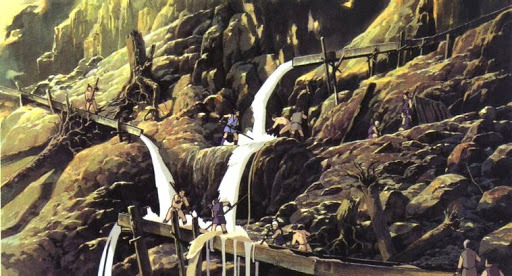

This difference can also be distinctly observed in the valley pans after the Great Forest Spirit has been decapitated, and after the head has been recollected. In the first scene nature has been further deprived by humanity, its greatest being treated as resource. In the second, humanity has finally yielded something back to its environment, and thus the valley re-blooms in opportunity.


One caveat in the representation of nature’s autonomy in both Princess Mononoke and Ponyo on a Cliff by the Sea are the reactive and corrective characteristics employed. In both films, there is real danger to the environment that may make it uninhabitable for humans, though it is stemmed from human actions. In Ponyo, the citizens of the harbor town pollute the ocean and harm its wildlife. As vengeance, the Ocean god floods the city. In Mononoke, the citizens of Irontown irresponsibly extract all resources from the valley, and the Great Forest Spirit responds by trying to kill all beings in the valley. These depictions are useful as they artistically show pseudo-real effects of failing to protect human and nature’s rights to well-being. However, these allowances for the state of nature to perfectly self-correct are not extremely productive. The harbor un-floods in Ponyo, the valley re-blooms in Mononoke. These resolutions effectively undo the pedagogical work of each film by allowing the damage to be reversed (not endured or combated) by non-human hands. Although both films conclude with tentative allusions to a rights-based agreement being struck, this trait may not be practical in enlightening audiences to the realities of implementing the right to a healthy environment.
3.0 Conclusion
The right to a healthy environment is underrepresented in the founding documents of sovereign nations around the world despite its practical use to provide for the needs of human beings. Conflicts between interests in economic success and concern for environmental preservation may be a prominent source for this disconnect, but there are compromises that can ensure the best possible life for people and protect the spaces we inhabit. Artistic activism is one process through which we can better communicate and understand the costs of, and solutions to, unsustainable actions. Studio Ghibli demonstrates this through its films Ponyo on a Cliff by the Sea, My Neighbor Totoro, and Princess Mononoke in not only content but visual aesthetic choices that engage audiences and inspire empathy. Although film alone cannot amend the real issues we face on environmentalism today, it can inspire responsibility to create change such as establishing new rights for the benefit of all.

Bibliography
Banner, B. (2019, February 07). Alexandria Ocasio-Cortez: Corruption Is Legal In The United States. Retrieved from https://www.youtube.com/watch?time_continue=250&v=Kz1lxKF2hDY.
Bowler, I. (2002). Developing Sustainable Agriculture. Geography,87(3), 205-212. Retrieved February 25, 2019, from https://www-jstor-org.
Boyd, D. (2012) The Right to a Healthy Environment Revitalizing Canada's Constitution. UBC Press. 68, 134, 209.
Carson, R. (2015). Silent spring. Penguin Books, in association with Hamish Hamilton.
Chan, M. (2015) “Environmentalism and the Animated Landscape in Nausicaä of the Valley of the Wind (1984) and Princess Mononoke (1997).” Animated Landscapes. doi:10.5040/9781501304804.ch-006.
Fukamachi, K. (2017, 11). Sustainability of terraced paddy fields in traditional satoyama landscapes of Japan. Journal of Environmental Management, 202, 543-549. doi:10.1016/j.jenvman.2016.11.061.
Gourmelon, G. (2015, January 27). Global Plastic Production Rises, Recycling Lags [PDF]. Washington, D.C.: Worldwatch Institute.
Lavender Law, K. (2016, September 7). Plastics in the Marine Environment [PDF]. Woods Hole, Massachusetts: Sea Education Association.
Miyazaki, H. (Director). (1988). My Neighbour Totoro [Motion picture on DVD].
Miyazaki, H. (Director). (1997). Princess Mononoke [Motion picture on DVD].
Miyazaki, H. (Director). (2008). Ponyo on a Cliff by the Sea [Motion picture on DVD].
Mumcu, S. & Yılmaz, S. (2010). THE LANDSCAPE OF MIYAZAKI; ENVIRONMENTAL CHARACTERISTICS AND MESSAGES.
Mumcu, S. & Yılmaz, S. (2018). Anime Landscapes as a Tool for Analyzing the Human-Environment Relationship: Hayao Miyazaki Films. Arts. 7(2). 10.3390/arts7020016.
NRTEE. (2011). PAYING THE PRICE: THE ECONOMIC IMPACTS OF CLIMATE CHANGE FOR CANADA [PDF]. Ottawa, Ontario, Canada: National Round Table on the Environment and the Economy.
OregonForests.org. (n.d.). Sustainable Management.Retrieved February 18, 2019, from https://oregonforests.org/content/sustainability.
Running, K. (2015, 03). Towards climate justice: How do the most vulnerable weigh environment–economy trade-offs? Social Science Research, 50, 217-228. doi:10.1016/j.ssresearch.2014.11.018.
Schlosberg, D., & Carruthers, D. (2010, 11). Indigenous Struggles, Environmental Justice, and Community Capabilities. Global Environmental Politics, 10(4), 12-35. doi:10.1162/glep_a_00029.
Smith, M. J. & Parsons, E. (2012, 01). Animating child activism: Environmentalism and class politics in Ghibli's Princess Mononoke (1997) and Fox's Fern Gully (1992). Continuum, 26(1), 25-37. doi:10.1080/10304312.2012.630138.
Thevenin, B. (2013, 10). Princess Mononoke and beyond: New nature narratives for children. Interactions: Studies in Communication & Culture, 4(2), 147-170. doi:10.1386/iscc.4.2.147_1.
US EPA. (2014, May). A Closer Look: Land Loss Along the Atlantic Coast. Retrieved February 18, 2019, from https://www.epa.gov/climate-indicators/atlantic-coast.
US EPA. (2016, August). Climate Change Indicators: Ocean Heat. Retrieved February 18, 2019, from https://www.epa.gov/climate-indicators/climate-change-indicators-ocean-heat .
Yamanaka, H. (2008). The utopian ‘Power to Live’; The significance of the Miyazaki Phenomenon. In MacWilliams, Mark W. (Editor); Schodt, Frederik L. (Foreword by). Japanese Visual Culture : Explorations in the World of Manga and Anime. Armonk, NY, USA: M.E. Sharpe, Inc., p 237-255.
Yokohari, M. & Bolthouse, J. (2010). Keep it alive, don’t freeze it: A conceptual perspective on the conservation of continuously evolving satoyama landscapes. Landscape and Ecological Engineering,7(2), 207-216. doi:10.1007/s11355-010-0116-1.
1 note
·
View note
Text
Good Stuff - THE TROOF ABOUT STEVEN UNIVERSE - Part 2
WARNING: If anybody’s got a clown suitcase, I would very much like to see it. And here’s part 1, if you wish to know more. Thank you, take care out there, and enjoy.
Steven Universe is a charming, popular show with a quad-polar fandom, and I’m only here to point out what I say is legitimately wrong with the cartoon. Simple enough? Fair enough. Previously, I talked about how their action is so basic, it’s inexcusable. Now for Point number 2, which is also my favorite:
THE VILLAINS:

I fucking love villains. Not just for the who, but why and how they do it. When bad guys like the Joker, Lord Dominator, DIO, or Him do their thing onscreen, I enjoy every moment of their threatening essence (except Jared Leto’s Joker, he sucked). Villains remorselessly do unethical, downright vicious, things to fulfill their goals while initiating setting up the heroes to correct these effects with their efforts and abilities. Steven Universe has villains, sure. Yet, after having so many chances, Rebecca Sugardaddy has failed to make them REAL villains, specifically the Great Diamond Authority.
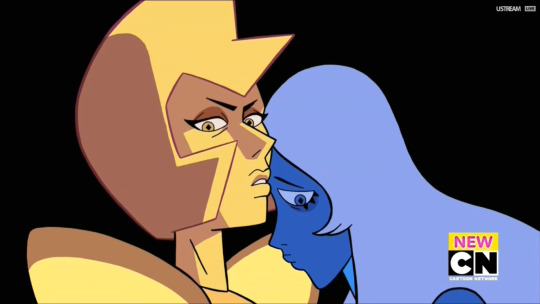
Now originally, I was gonna compare the Diamonds to the likes of Fire Lord Ozai (Avatar: The Last Airbender) or DIO (JJBA); villains that work in the shadows and when they’re eventually revealed, they’re already a force to be reckoned with. But looking into how they and Homeworld is set up, there was no other villainous ensemble that could stack up with the Diamonds perfectly like the Gorosei from the anime One Piece.
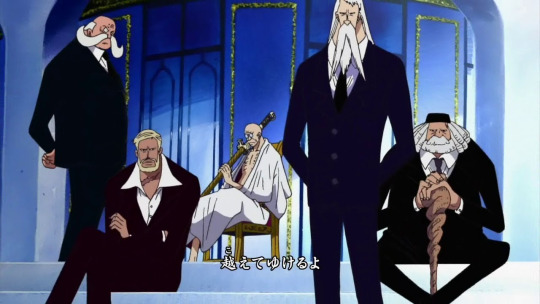
Looking more badass than the US Government
Now these five gentlemen aren’t necessarily what make up the end all be all for the series, but above all, the Gorosei are the ruling leaders of the organization that controls the entire world of One Piece. They command the military, the police, and other agencies, like their investigative and espionage departments, and the only people that out rule these gentlemen are the descendants of those who created it several centuries ago. Like the Diamonds, they seek to maintain order and justice for the people of their world and doing so means taking on any sign of revolution (namely Pirates) that could damage not only their image, but their purpose. Both Authorities possess absolute rule over the many classes that are under them and their stance of power can be present with the many actions that effect the characters we focus on currently. The difference between the two ruling classes is nuance, aka a grey sense of morality, aka an actual sense of relatability. So when I see a series having an overall narrative villain, Steven Universe has shown me that sympathy should NOT be a factor in storytelling.
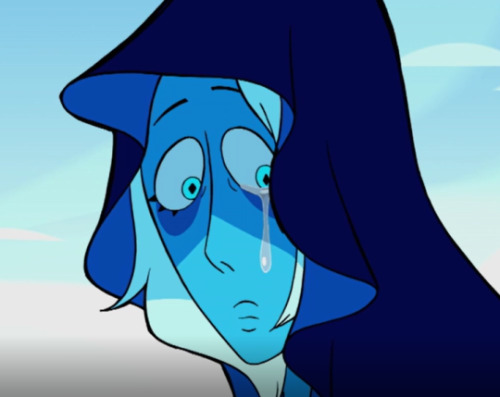
And their crocodile tears are not welcome either...
Now when I say this, I don’t mean you can’t sympathize with any villain you see. Most of the time, you can feel for the antagonist when their lives never were good to begin with, that’s namely how villainy starts out, therefore making their actions not so much justified, but understandable. Take the rogues gallery that are the enemies of Batman.
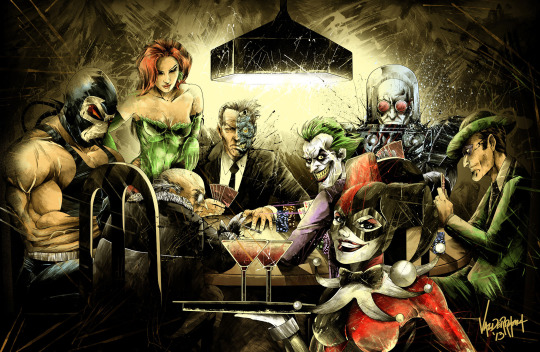
Every one of them has a story to tell and a method to their madness. Their histories weren’t as nice or as hopeful as they may have hoped, and you can feel their pain as their efforts to be successful at something grand falls apart due to the Dark Knight or life’s unforgiving nature. However, the sympathy stops there because none of these masterminds, with the Joker being an exception, serve as a main villain to Batman’s crusade for justice, they’re continuous rivals and one off stories that expand the DC Universe. No evil in Gotham is powerful enough because Batman’s story has no real endgame. Steven Universe and One Piece will eventually have an endgame. And while the Gorosei represent an Oligarchical commodity that separates its order seeking rule from their affiliating countries, The Diamonds have amounted to being under one system alone:

Yep. Nazis.
And it’s weird I bring this up. For I would’ve thought to have called Homeworld an authoritative caste system where the gem you’re born with defines your class and status, coinciding with the gems’ natural abilities. The specific gems are given a role and everyone plays a part to maintain societal order, like what India has, with the Diamonds being the biggest and strongest gems and therefore are the de facto Matriarch of the gem society, you feel me? That would’ve earned a little sympathy from me, because the Diamonds losing Pink would’ve meant the massive changes to accommodate their order and resources might not have worked out so well and their image as leaders are slowly diminishing and that can explain the huge resentment for Earth and Rose’s Rebellion.
But no. Instead the Diamonds are a repressive totalitarian government that basically control everyone and everything, all the gems below to strictly follow and almost never question their line of reasoning, and they’re reasons for destroying the Earth has been summarized down to the emotional baggage and grudge that came with their failure long ago.
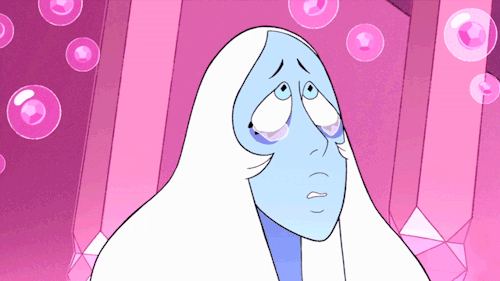
CAN YOU NOT FEEL THEIR PAIN?!
Wanna know why I didn’t compare the Diamonds to Avatar’s Fire Nation when talking about humanizing the enemy and the connection couldn’t be more obvious? Because before Ozai is ever mentioned, The Last Airbender states very clearly that the Fire Nation is the region Aang and his friends need to infiltrate to stop their manifest destiny. And when we’re early hinted that Zuko’s not full on evil, it lets the audience know that not everyone is on board with those in charge of the Fire Nation invasion, leading up to Ozai's big debut where we see that as the endgame villain, he’s irredeemable and has such a lust for power, that he’s recognizably the main drive everyone has to stop. Avatar did this right because little by little, the main enemy was narrowed down to a single force that hasn’t made itself known until near the end when his presence bear more importance. The same can’t be said for Steven Universe because Rebecca Sugar Rush presented yet another faint mistake.

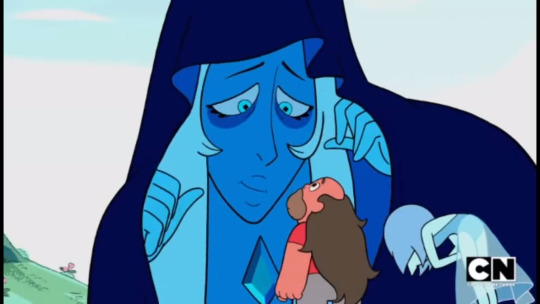
The Diamond’s personalities are given to us before they’ve shown us who they are and what they’re capable of...
So we see Yellow Diamond as a vindictive, no nonsense leader that wants shit to get done and Blue Diamond as a more tender looking, yet no nonsense leader that’s grieving over Pink Diamond’s death and does whatever she can to move on and remember the fallen fondly. So, have they done anything before we’ve met them personally? Sure.
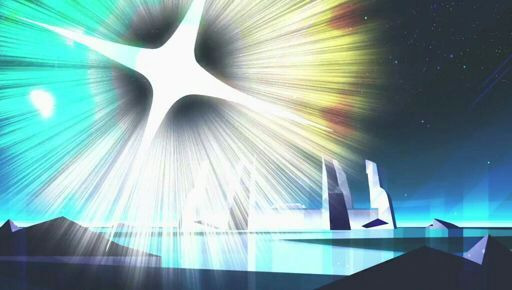
*They corrupted thousands of their own kind (because of the rebellion)
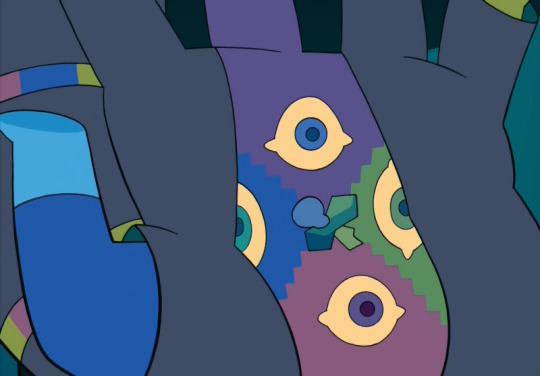
*Allowed experimentation towards shattered gems to make artificial fusion (because of the rebellion)

*Ordered a search and destroy on all “defective” gems that go against the Authority’s standards and prevalence while said defectives put themselves in a literally hole of despair for coming out wrong (Gaslighting)
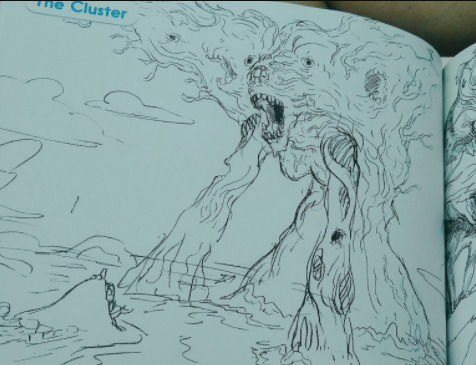
*And let’s not forget the Cluster (because of the rebellion)
So yeah, quite a lot actually. Now you might be thinking, “But Monkey Network, what does those five old men have to do with what the Diamonds did?” Well, when you see the villainous shit the Gorosei have commanded, their actions are actually more relatable.
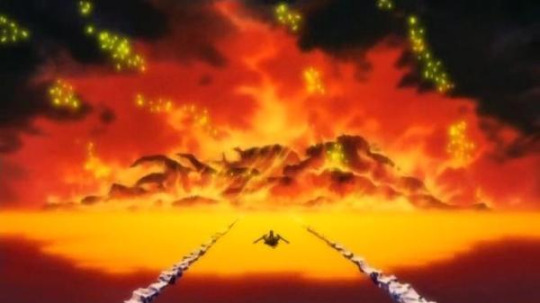
*Ordering the destruction of an island of archaeologists because they were secretly researching forbidden history

*Allowing a hit on their own government affiliated island to erase any potential surviving threats that invaded there

*Directing the Marines, or the front line enemies of our Pirate heroes
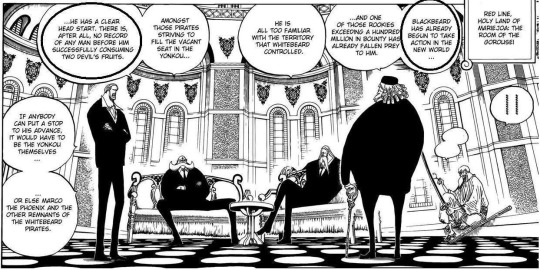
*And contemplating their system’s next move when updates arrive
Now I don’t know about you, but these gentlemen make up quite an authoritative class with understandable motives and relatable notions on running the world without necessarily being on the front lines. Kinda like the US over the years? Even when their level of corruption can be on par and we still know little of their true power and who they really are, they’re instantly better than the Diamond Authority because we can see why they’re in command, their thoughts and actions towards our heroes shows no sign of being sympathetic, and yet we see where their motives lie. I mean, their Government’s enemies are pirates. You know, Pirates? People who’ve robbed and killed and are the opposite of order? See where I’m going here? They namely go after our heroes who are seen to be the enemy even when the Pirates and plenty others consider them the enemy. It’s almost as if there’s a grey choice for the audience to wonder whom the real bad guys are. OooooOOh.
Also, quick side note. The Gorosei look fucking cool. Like their designs aren’t exactly human, credit towards Eiichiro Oda and his expressive designs, but they’re drawn with such a level of seriousness and stature that it presents their elder wisdom and grave subtlety towards a subject in a contrasting light to the pirates bombastic, emotional appeal. But the Diamonds?
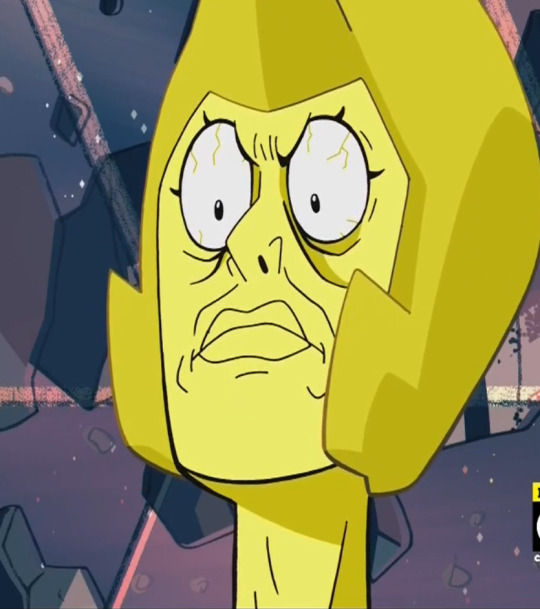
This picture summarizes how I will never take them seriously, no matter how hard they try or how good Patti LuPone is
So, what has this amounted to? Basically, Rebecca Sugardop has given us nonthreatening villains that showed no sign of any redeemable qualities beyond their ability to mesmerize us with their acting. That and give us an episode that, in summary, tells the audience that killing an enemy like the Diamonds makes you no better than them. Yeah, I have to go there.
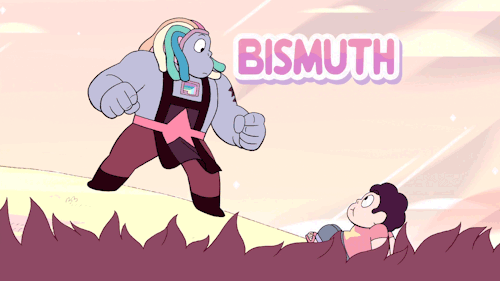
I’ll try and make this quick.
This episode was Crime and Punishment done bad. For Crime and Punishment, it was an old Russian tale of a man killing a woman that’s rich yet unliked in the community because he believed it was for a greater good; implying that murder is permissible in pursuit of a higher purpose. Same can apply to Bismuth, having faith that in killing the Diamonds, Homeworld can be liberated from the oppressive elite. Here’s where that tie-in ends: the effect. In Crime and Punishment, the killer shows sincere regret towards his actions because it didn’t present any change in the community beyond the fact that an old woman got murdered and the only thing the she was despised for was being a greedy pawnbroker. What regret would’ve there been in using the Breaking Point on the Diamonds? Bismuth wasn’t set on killing any Homeworld gem around, just the leader who show that they mean and will mean business unless they’re fully out of commission. The show wanted to say killing the Diamonds is bad even when the effect of it could be good, but never offered any other method to success and just shunned Bismuth to dormancy until they need her again, proving she might have been onto something.
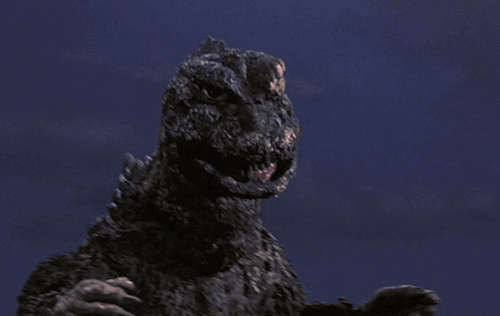
Whew. So, what’s the tl;dr aspect of this since you probably won’t take this seriously. Well, call this a domino effect. Rebecca Sugar Pop is trying to make sympathetic dictators, which is itself an oxymoronic detail. In doing so, she failed to make them real villains. In doing that, there really are no real villains in the show. And when there are no villains, the conflict feels dry and absent. And without conflict, she failed at putting together HALF an overall story. And when you’re a coming of age story where it has to end on some note with maturity and change, after almost five years in the making, you just FUCKED yourself over when you didn’t even invest time in HALF of what makes an overall story of good and evil investing and engaging. Oh I’m sorry, what makes an overall story of a blurred line between good and evil. Investing and engaging.
I can’t care anymore. If they get redeemed, sure. If they end up dying like a tragedy, fine. They feel less like villains to overcome and more like stairs Steven has to step on to become a better person. Just let White Diamond be as grandiose and badass as Tumblr’s AUs of her, because again...
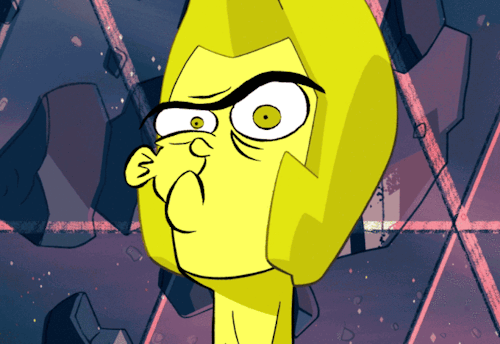
The fandom is doing the show a bit of justice
#steven universe#su#su critical#su criticism#su critique#villains#Bismuth#One Piece#Gorosei#anime#cartoons#reviews#su gifs#analysis#Good Stuff#Roy Macintosh#ye#awesome
309 notes
·
View notes
Text
Malcolm, Moira, Thea and anger

Note: This post came about because I stumbled upon a cool gifset whose conclusion was that Thea’s rage was the one thing she took from her father (as opposed to her mother). Someone added tags about how Moira’s rage was actually so much more powerful, and Malcolm’s was small and insignificant just like himself. That’s so drastically opposite to my own interpretation that I just had to write something about it. I didn’t want to hijack someone else’s meta though (particularly tag meta), so I figured I’d just make a new post. Particularly since I have a lot of thoughts on the matter. Malcolm and Moira were my first favs in Arrow and I loved all of their interactions together.
So, long, in-depth analysis of Malcolm, Moira and Thea and their relationship with anger under the cut, one by one. I just don’t do short.
Malcolm
First off, I truly think there is nothing small about Malcolm’s rage. Not its origin, not its intensity, not its duration, not its results, not anything.
The cruelty of the men who shot and killed Rebecca Merlyn for nothing (“I told them to take everything”), the indifference of the people who walked by and ignored her cries for help, who let her bleed out and die on the street as if she didn’t matter (as if she wasn’t there for them in the first place, as if she hadn’t made it her life’s mission to help them and save them with her free clinic) - these are more than legitimate causes of anger. You know what else isn’t small? His anger at himself and his own failure to protect or help her, his regrets for that stupid momentary feeling of exasperation that made him shut his phone off that night (such dreadful consequences for such a small act of negligence that married couples do to each other all the time - that people in general do to loved ones all the time). His shame and rage for his motherless son. The whole thing is just a huge tragedy.
(And I just don’t think this rage should be called selfish.)
Malcolm harbored these feelings for 20 long years. They compelled him to give himself up to Ra’s Al Ghul to be tortured and brainwashed into something else, because he felt it could give him a measure of control and power back over his life. He let them fester inside of him for 12 years after his return from the League before he decided to act on them by starting the Undertaking. 12 years of desperate search for some form of redemption, for peace. 12 years during which he strived to honor Rebecca’s legacy the way she would have wanted, to save the city with charity and when it was no longer enough, by blackmailing the rich and corrupt. 12 years of frustration because you can’t win a war against crime. 12 years is the time it took him to convince himself that some people can’t be saved, are better off dead (because he is that kind of person: arrogant and unforgiving, justice without empathy or understanding).
Two decades after Rebecca’s death, his rage was still as intense as ever, if not more. It consumed his being to the point her death became the only thing that mattered - more than her life, even. An obsession that eclipsed everything else. He let it destroy his relationship with his son, let it destroy their family. He listened to that recording of her dying over and over until it drove him mad (until her tears and suffering were engraved at the forefront in his mind like words on stone - “No one would come”). He murdered Robert, his best friend in life, along with Robert’s son (Tommy’s best friend), because at this point he was no longer capable of truly caring. He murdered countless others. He blackmailed Moira into doing his bidding with the life of her daughter, a woman he used to have feelings for (whether they were purely platonic or more). He destroyed every relationship he had, spent countless hours planning his Undertaking, gave away huge amounts of money, all of this for years, and for what? Nothing. He risked everything, in the end lost everything, and he had absolutely nothing to gain from all of this, only a pointless, false satisfaction, the illusion of revenge. (The murder of a thousand innocents to pay for the murder of one? It’s a senseless spiral of violence and he was too far gone, down into the abyss, to see the irony.)
Malcolm Merlyn’s rage basically killed him, made him kill his city, and there is absolutely nothing “small” about that. Robert’s death wasn’t small, Moira and Thea’s sufferings weren’t small, Oliver’s 5 years in hell weren’t small, Walter’s kidnapping wasn’t small, the Unidac massacre wasn’t small, 503 people isn’t small.
(“insignificant” just isn’t a good word here.)
You can’t even say that his wrath was an illusion with the intent of making himself seem bigger, because he actually kept it carefully hidden and controlled. To the world, he showed the face of an affable businessman, and whenever his anger would show behind the mask, he’d use his own sorrow to disguise or dismiss it:
Malcolm [smiling]: My wife would have liked you, Laurel. Laurel: I’m only sorry I never got to meet her. She passed away before Tommy and I became friend. Malcolm [bitterly]: She was killed, Laurel. There is no need to be ‘polite’ about it. Tommy: You’re just a ray of sunshine today, aren’t you, Dad? Malcolm [smiling again]: Please forgive me, talking about my wife has a tendency to make me a bit maudlin.
“A bit maudlin”. He didn’t want people to know how truly enraged he still was about what happened. It’s actually an interesting dynamic: inside, he was using his anger to drown out his grief; outside, he was using his grief to conceal his anger. We only really saw glimpses of it (like the way his voice almost broke during his speech in Dead to Rights), up until it burst out during his conversation with Tommy in Sacrifice (“They deserve to die! All of them! The way she died!”). I don’t think he even wanted to admit it to himself. Instead, he presented his Undertaking as the only logical solution to an underlying societal problem. “I like to think that if the man who murdered her knew her, knew the work that she did, he would have helped her to her car, made sure she was safe, instead of taking her purse, and shouting her.” -- this is the man Malcolm wanted the world to see him as. Forgiving, hopeful. Someone who still believes in humanity, someone who sees the best in people just like Rebecca did. Because deep down he knew this is who he should be or strive to be. Mr Humanitarian of the Year. And it was all a lie.
I think people have a tendency to glamorize anger, because anger can be good and it can be beautiful. After all, anger is what motivates us to fight against injustice. So when we don’t like it in someone we want to make it less. But I think that’s hiding the fact that it has an ugly, dangerous, self-destructive side, that even righteous anger can become wrong when taken to the extreme, left unchecked. The whole problem of Malcolm’s rage isn’t that it was illegitimate. He had every right to be angry. It’s that it was wildly, terribly disproportionate. Monstrous.
Moira
All of this is in sharp contrast with Moira Queen. If Malcolm’s flaw was that he was too angry (let his anger turn him into a monster), Moira’s was that she wasn’t angry enough.
Moira is earth where Malcolm is fire (and together they are lava, a freaking volcano - a natural disaster about to erupt). Less aggressive and powerful, but more stable and enduring. Fully controlled instead of just focused. Like the earthbenders from Avatar, her stance is neutral jing: listening and waiting for the right opportunity. Fighting for preservation instead of fighting for change. Prudent in everything she does.
She stood by her husband through all the lying and the cheating. Robert cheated on her right after his best friend lost his wife (who was probably also their friend - that’s just highly distasteful). Years later, he cheated on her with a woman barely older than their son and called her his “soulmate” (that’s even more distasteful). Moira dealt with all of it and never let it affect their family - so much so their children never had any idea their father was unfaithful. She remained steady as his partner, still loved him despite everything, still supported him whenever he was worried or anxious - even if she didn’t trust him (“Robert, if this is what I think it is, I don't want to know her name--”). She endured.
Unlike Malcolm, losing her husband and son didn’t cause her to run or gun for revenge, instead she retreated into herself (“When you and Dad disappeared, she spent more and more time at home. Eventually stopped going out altogether.”). She had the exact same reaction after losing Walter. Both times, she put herself back together and pushed through life, solid for her family.
She searched for the Queen’s Gambit for two years after it sank, looking for proof, for surety, before blaming Malcolm. She salvaged the remains and kept them secure to potentially use as leverage at a later date, and never once brought up the fact she knew he murdered her husband and son to Malcolm before the start of the show. For years, she played the good soldier. She let him believe they could still be friends, that she believed in his cause (“And I think I speak for everyone here when I say we're all with you, Malcolm.” and “Moira, you may be surprised to know that I sometimes waver in my convictions. But your friendship, your endless support, always gives me the strength to carry on.”). Moira was never rash, she was always cautious and calculated. There may have been a terrible rage lurking under the surface, but we can only guess based on context - she never truly showed it, certainly never let it dictate her actions. Horror, guilt and sorrow - yes; but not anger. Hell, Malcolm tried to murder Oliver at his party in her own home, the son she’d just got back after five years of believing he was dead (that Malcolm had murdered him along with his father), and her only reaction was to make sure he understood she wouldn’t stand for yet another attempt on her family. Pretty cool under the circumstances. Later, she even made the choice to let Malcolm kidnap her second husband (actually even asked him to do it), rather than opt to fight him together.
Malcolm Merlyn was very much a “high risks, high reward” kind of person. Not Moira. She didn’t like taking risks, playing the game of thrones. She prepared some cards (the Gambit, Grizzled Man), but never attempted anything against him until she was backed into a corner (after the Hood attacked her and she realized she was now caught between two psychopaths). After her carefully planned assassination attempt didn’t pan out, her next move was to cut her losses and retreat, make sure her family was still safe no matter what (and if it meant throwing her good friend Frank and his family under the bus… well she wasn’t their mother, was she?). Moira could be so pretty damn ruthless: having her son kidnapped and tortured as soon as he got back home from 5 years of hell (imagine the trauma if Oliver wasn’t what he was - and Moira sure knew how much pain he already had to deal with: “20% of his body is covered in scar tissue”); having her husband kidnapped right after telling him he was her salvation; planning the murder of one of her oldest friend, him and his guards and the servants and whoever else was on the way, waiting for it to happen right after agreeing to a dinner-date with him; sacrificing another one of her old friends for something she made him do against his own better judgement (after he went out on a limb for her!); being ready to kill thousands of people for her and her family’s safety; etc. But unlike Malcolm her ruthlessness was never rooted in rage, it was always about fear and survival - she did whatever she needed to do for her family.
And I think that’s important in terms of Moira and anger - she should have been angrier. She should have lashed out, fought back, taken risks. Anything but accepted, even for a second, that leveling 24 square blocks and getting away with it was an tolerable end. Anything but surrendered before having tried her damn hardest to get out. Before Oliver pushed her to turn on Malcolm at the last minute, she wasn’t just going to let him murder thousands of people, she actively helped him do it. She bullied people (her friends) into serving his vision, threatened some of them, and it was her company that built the earthquake device at the end of the day. I think sometimes the fandom forgets that - she was a mass-murderer too. Not the architect of the Undertaking, but the second most important conspirator. Her confession at the end of the first season does redeem her a little, but 503 people still paid the price of her selfishness with their lives - not counting the suffering of the numerous survivors: the physical and mental scars, the permanently disabled, the pain of those who lost their loved ones, the struggle of rebuilding a broken community in the poorest part of town. Her belief that her and her family were more important than all of them Glades inhabitants put together, that they weren’t worth protecting, that she could afford to sacrifice them - it caused that. Moira had a right to be afraid; Malcolm had a right to be angry - neither of them had a right to kill.
(And nope I’m not equating what they did, Malcolm is still a hundred times worse.)
Sebastian Blood once asked Moira: “During your trial your portrayed yourself as a fragile creature living under Malcolm Merlyn’s thumb. So which is it? The woman strong enough to lead the city? Or the one too weak-willed to save it?”. The answer is both. Moira had the strength of a mountain, but I meant what I said about anger having a positive side. At the very least, it means that you have an incentive to fight for the wronged. There is something terrible about Moira’s dismissal of the lives that would be lost (that were lost) - “I’m not their mother”, she said.
So, yeah, at the end of the day, Moira was better than Malcolm. She never let her sadness and grief turn into cruelty. Her priority was always to protect the loved ones she had instead of lashing out for the ones she lost. She never let her pain skew her perspective, never forgot how to love. For her children, that was enough. For so many others, it wasn’t.
Thea
So, we have these two terrible disasters - and they made a baby together (volcanic islands are very fertile, they say). Thea, who at four year old brought home a stray cat who horrified her mother (“it was filthy, and it was mean”) and decided it was going to be family; Thea, who fell in love with the delinquent boy who stole her purse; Thea who’d never think of the poor and homeless as any less important than she is, who has a greater capacity for empathy than both her parents put together (heck, maybe even her whole family put together).
(“Thea was always so kind. The kindest person I’ve ever known.”)
Thea has her father’s anger. Sometimes it can be self-destructive, like when she jumped into a car high on Vertigo because she thought her mother was having an affair with Mr. Merlyn (off by a few years), or when she was ready to go to prison just to punish her. It can make her disagreeable, like all the times she lashed out at Oliver after his return from the island for being distant and a liar, or at her mother for being negligent. It can make her hard, like when she categorically refused to visit her mother in prison for months. It can compel her to make some very bad decisions, like letting their family lose their fortune or leaving with Malcolm Merlyn at the end of season 2.
But her anger means that she cares. A lot of people didn’t like Thea in season 1, and maybe she was wrong to be so hard on Oliver or Moira or Roy, but it was because she loved them and more often than not wanted to help them (and it wasn’t such a bad thing to ask them to care about her too from time to time):
Moira: Please, don't presume to think that you know what I'm going through. Thea: I do know. I lost Dad too. I'm worried about Walter too. But I don't get to worry about him, because I'm busy worrying about you. Moira: I never asked you to do that. Thea: Right. Because you don't ask me to do anything anymore. You don't ask me to do my homework or to be home at a decent hour. I mean, you basically stopped being my parent. Moira: Well, how's this? Don't talk to your mother like that. Thea: Maybe you should start acting like my mother. So I don't have to act like yours.
Thea cares about her family so much, blood family and found family, and that makes it so much more difficult every time they betray her, or die, again and again. And as she grows up, we see her lose a lot of her immaturity: Thea inherited Malcolm’s rage, but also her mother’s grace. Despite all the pain she went through, she hasn’t let that anger destroy her like it destroyed her father. When it was amplified by magical factors, she fought against her bloodlust until it was killing her. When she realized it was getting out of hand (when she almost killed a little girl to stop her father - that’s the most like Malcolm she’s ever been), she made the choice to step away from her vigilante life no matter how much she loved it. And she has a huge capacity for empathy and forgiveness: she forgave Oliver once she understood why he was being distant, she forgave Roy for pushing her away every time he did, she forgave her mother for neglecting her after Robert’s death, she forgave her for committing mass-murder once she realized how scared she must have been, she was even ready to forgive Malcolm (“You protected me, risked your life for me. Just like my mother did.”).
She has enough anger in her to be passionate about things, to care that a wrong is being committed - to stand up for the innocents. It means she will never just passively accept an atrocity (mass murder), let alone participate in said atrocity like her mother did. Thea will always choose to fight. How many times has she risked her life for strangers since she became Speedy? At the same time, she has enough love and restrain not to let that anger devour her.
Ultimately, the woman she’s growing into can be the best of both world. Despite all her fears that she is doomed to become her parents, Thea will never be Malcolm, and she will never be Moira. She is, has always been, and will always be better than the both of them.
#thea queen#moira queen#malcolm merlyn#arrow#mp#my commentary#precious summer child and her trashy parents#is it me or does willa really look like thompson and barrowman's love child?#the queens#the merlyns
18 notes
·
View notes
Photo
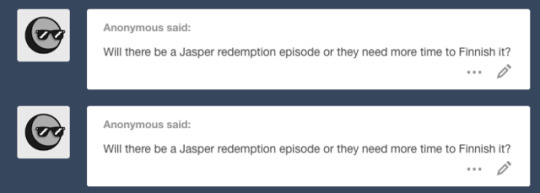


so i’ve had these jasper asks in my inbox for a while... and it’s about time i addressed them. i’ll be focusing especially on that last one and the idea of “deserving” redemption, + some of my own general thoughts to talk about the su narrative, jasper, her relationship with peridot, trauma, steven, and where we go from here.
it’s time for another jasper post under the cut.
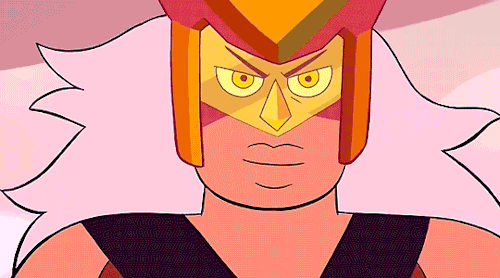
steven universe is pretty loyal to the rousseau was right-trope, which basically means that while yes, people are accountable for their actions, everyone are born as a moral blank slate and drawn towards doing what they perceive to be right - if someone is “evil”, it’s because of outside influences, not because they were ‘born’ weak or selfish or cruel. it also implies that anyone has the chance of redemption and renewal.
one of my more radical stances in fandom is that i don’t think jasper is a bad person. partly because she’s dedicated to a cause she believes is just, and partly because i don’t think any gem is supposed to be “bad”. i think she’s rather selfless - a “neutral good” within her own mind - and to her, the people and places she’s loved are more important than she is. she holds herself to just as high standards as anyone else, if not higher. her views on defects and corrupted gems are incredibly similar to peridot and yellow diamond, and this seems to be the general rule within the yellow sector - your “use” is very much the focus.
for this reason, it’s deeply unfair to compare her to, say, blue’s quartzes: gems who have spent the last 5000 years with a loving support network of fellow quartzes with and without defects, playing daycare for the zoo humans, not living to fight, under a diamond who wants them to grieve, love, and feel their emotions to the fullest.
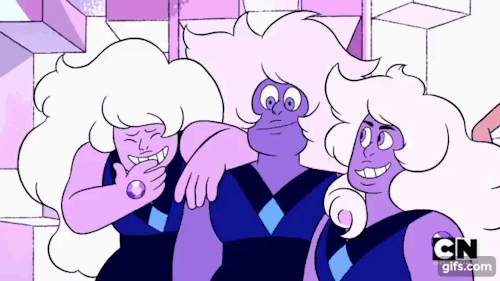
i think it’s also noteworthy that despite living a completely different life, i don’t actually think jasper’s so hardcore against defects as people give her beef for. not really - at least no more so than peridot, who trash-talks pearl and corrupted gems alike.
jasper’s treatment of peridot herself is the main example of this, and works as an important contrast between how jasper treats gems with defects VS. how say, someone like holly blue treats them (because yes, actions still matter, even if the why makes sense):
jasper never lays a finger on peridot, insults her, or otherwise mistreats her. in “the return”, she sounds outright bored, because she believes peridot can handle herself when it’s just a handful of gems. she doesn’t define peridot by her defects. peridot, in turn, feels comfortable around jasper - enough to argue with her, roll her eyes or whine (”we can’t leave yet!” “ugh, fine”), and talk shit in a casual way. she doesn’t think jasper will punish her, hurt her or do anything more than argue back.
holly blue seems to terrorize gems on homeworld’s side, physically and verbally. it’s part of her job, but it’s also out of her own perfectionism and impatience, to keep them in line and remind them to defer to superiors. this is before they do anything wrong, and she’s very much wrong to do so. by contrast, peridot can mess up, or even depend on jasper’s help, and the worst jasper will do is tell her how to attack with the ship, or that they gotta get back to homeworld - she’s stressed, but she doesn’t say either in a demeaning, harsh or cruel way.
jasper is cruel to amethyst, yes, but there is a very important key difference here: amethyst is a crystal gem. jasper doesn’t fight her for shits and giggles, to keep her in line or “just” because of a superiority complex - she sees her as The Enemy(tm). this is such an important difference, because jasper doesn’t treat gems on her own side this way, even when their defects are blatantly obvious.
peridot, without her enhancers, is basically “useless” - she’s a crystal gem, and she can’t do her job properly without her screen and fingers... but jasper is outraged at what the crystal gems did to her - taking her enhancers, her status, her dignity. she still wants to reason with her, and doesn’t take any shots (physical or verbal) at peridot the entire time - she may have been told someone like peridot no longer has a use, and she does repeat some of yellow diamond’s rhetoric... but a part of her resists that mindset, because jasper’s a very emotionally-driven person. like pink diamond, peridot is in a box labelled “people i care about”, and so anything bad that happens to them is unfair. it’s not what they deserve... and peridot wants to help her. she tries, genuinely, to explain what’s so great about earth.
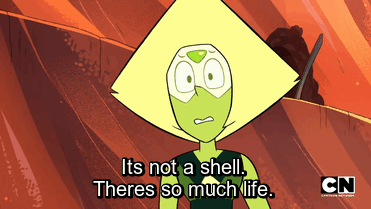
this is what i mean when i say jasper holds herself to higher standards of usefulness than anyone else. above all, jasper’s fatalistic mindset is a combination of the “yellow sector” ideology and how she copes with trauma. her base response is that if she didn’t do enough to prevent it, she deserved it. she pities herself, but she sees herself as worthless if she can’t do her job - protecting/avenging herself and others.
she also serves to hold characters accountable, in a way that is reminiscent of lapis in “mirror gem/ocean gem”. jasper’s treatment of the crystal gems seems excessively rude and violent at first, but the show dances a very long dance around her motivations. a lot of the point of jasper’s big episodes is to play with your assumptions - even a relatively straightforward episode like “crack the whip” is really about setting up “beta/earthlings”. not just to show what an empathetic and growing character amethyst has become, but to show why jasper was so desperate for revenge. we got to see her actions before her motivations, so when you find out that oh boy did she have reason, it’s a gut punch. it puts everything that just happened in perspective.
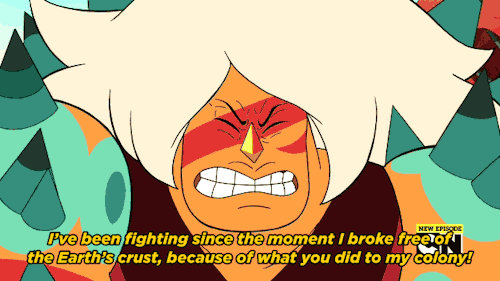
there’s a reason the show lets steven think jasper is “mean” or “terrible” for a while - and it’s not because she is. it’s because steven, at that point, is holding on to this idea that if jasper’s angry with people he cares about, she’s wrong. everyone he loves are Good. when jasper says something about wanting to beat up rose, or how pissed she is at lapis, that’s just Bad. he “got away” with this mindset with peridot, because peridot was young and didn’t really have any serious beef with the crystal gems. she was “easy mode” - not necessarily a better person, but younger and less cynical about her enemies.
“why do i never ask follow-up questions?!” is a great line steven says to himself, because that’s exactly how he treated jasper - he eventually tries to help her, but it’s out of wanting to “fix things” more than understanding her. that’s why it needed to fail. steven needed to hear her speech, and to learn the whole story without assuming the other side is evil... and of course, that’s part of what jasper was punished for, too, because that’s how she’s lived her whole life.
jasper was right about one thing, though - steven only helped after she was declawed. he didn’t care about any of the things she said beforehand. he took every situation at face value, and never considered that maybe she had reason... because that would mean taking a hard look at the crystal gems, his friends, and his worldview. jasper, with her parting words, sort of saved steven from becoming like her - completely entrenched in his own views, never questioning his “side” or the people he cares about. (she wasn’t alone in that, and the whole "bismuth -> bubbled” run was mainly about steven facing hard truths about the people he thinks of as ‘good’, but i digress.)
all of that so he could be punished for not knowing, for assuming, by the show delivering him a failure after harsh truth after failure when trying to help people. jasper being among them, she had to corrupt - a horrible situation born out of assumptions on both sides (that steven is rose and must be held accountable for her actions, that jasper is “bad” and that rose/lapis/ect were right to hurt her). the best way for the show to hurt steven is by hurting others, making him feel both like it’s his responsibility and like he’s helpless... so steven and jasper are a bit alike, in that one, particular self-blaming way.
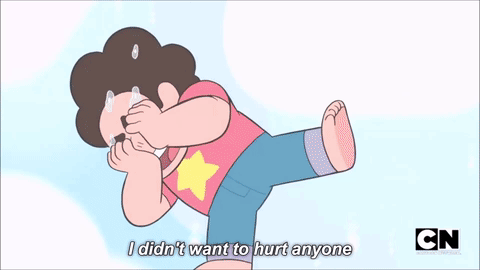
ok, i’ve gone on and on, but all of that just leads to the current question: where do we go from here?
after reaching a truly low point, steven had to slowly recover and build himself up again. starting with small human relations - “onion friend” and “future boy zoltron” were both about this, (which is why i’ll fight anyone who says they were just filler). so was “gem harvest”, letting him connect with family he didn’t know he had... and now, after slowly recovering from some pretty harsh trauma, he’s started to explore. he’s asking questions, finally, about the gems on his side. about rose, pink diamond, and about why the crystal gems won’t just tell him everything. this took him to space, to characters he can still help, if he tries to understand them - which is probably gonna be a part of the road ahead.
but then what about jasper?
...we can’t know for sure, but i think she’ll be back. i really want her to. corruption is still one of the bigger mysteries of the show, as is the whole situation around pink diamond. jasper is the character who is most obviously involved in both of these, so it’s hard to imagine she won’t pop up in either context. by my own view of redemption - which is redemption in the narrative, through learning that she’s a person and not just a “bad” gem - she’s already achieved that. my main focus is really healing, and i think that’s possible. steven wants to help, and he actually understands her now.
in the same interview we got this gem about jasper, rebecca sugar also talked about wanting to focus on self-love outside of relationships going forward. as someone who’s been alone, isolated and felt completely unlovable, jasper is a great candidate. that doesn’t mean she’ll never get to connect with anyone or have meaningful relationships... but as with steven, she has to recover first, and focus on herself, too.
391 notes
·
View notes
Quote
Gay men, lesbians, queers, two-spirited people, and men on the DL prefer to use their own identity terms, but many contemporary public health writers prefer the terms MSM and WSW, ostensibly because these terms avoid assumptions about a singular, misleadingly coherent gay identity. In practice, however, MSM and WSW often signify not a neutral stance on the question of identity but a decided lack of sexual-minority identity. More important, by implication, MSM and WSW imply absence of community, social networks, and relationships in which same-gender pairing is shared and supported. We are also concerned with the ways the terms have been racialized. As historian Allan Berube observed, “In the United States today, the dominant image of the typical gay man is a white man who is financially better off than most everyone else.”[20(p234)] Just as gay and lesbian are often coded as “White,” WSW and MSM often implicitly refer to people of color, poor people, or racially and ethnically diverse groups outside the perceived mainstream gay and lesbian communities. To understand how MSM is read, it is important to examine how explicit and implicit boundaries are drawn around the category gay. Consider, for example, a passage from Paul Farmer in which he claims that, in recent years, there have been fewer HIV cases than predicted among gay men in the United States, a category he implicitly racializes as White via the contrast with “injection drug users, inner-city people of color, and persons originally from poor countries in sub-Saharan Africa or the Caribbean.”[21(p47)] He further excludes gay from poor and suggests that “males involved in prostitution are almost universally poor, and it may be their poverty, rather than their sexual preference, that puts them at risk of HIV infection. Many men involved in homosexual prostitution, particularly minority adolescents, do not necessarily identify as gay.”[21(p47)] With this juxtaposition, Farmer seems to suggest that same-gender behavior among poor men of color (especially youth) is sex work rather than sex for pleasure and is devoid of identity and community; same-gender behavior among White men is read as synonymous with gay identity. Compare these assumptions with a recent ethnographic report on men at risk for HIV in Dakar, Senegal.[22] While many of these “men who have sex with men” are poor and engage in sex work, the authors found that they have indigenous sexual-minority identities that are differentiated and socially meaningful. Senegalese sexual-minority identities serve as a basis for social organization, including, but not limited to, sexual roles. The authors describe ibbi as men who “tend to adopt feminine mannerism[s] and to be less dominant in sexual interactions,”[22(p505)] whereas yoos are men who “are generally the insertive partner.” They also stress that the categories have “more to do with social identity and status than with sexual practices.”[22(p506)] Despite their careful attention to local sexual identities of men in Senegal, the authors referred to them in the title and elsewhere as “men who have sex with men.” With this usage, the rich information on identity is lost, with MSM conveying transactional, decontextualized same-gender acts. Ironically, applying MSM in this way universalizes a culturally specific phenomenon in much the same way that critics say does the term gay.
“The Trouble With "MSM" and "WSW": Erasure of the Sexual-Minority Person in Public Health Discourse,” Rebecca M Young and Ilan H Meyer, American Journal of Public Health, July 2005
“We believe that the solution resides not in discovering better terminology but in adopting a more critical and reflective stance in selecting the appropriate terms for particular populations and contexts.”
#rebeccca m young#ilan h meyer#health and healthcare#hiv and aids#terminology#racism#readings#linked text#community and identity
27 notes
·
View notes
Text
[David B. Kopel] The Million Mom March: Mass Mobilization Against Guns
On Mother's Day 2000, record-setting demonstrations for gun control were held in Washington, D.C., and in 73 other cities. Organized by the "Million Mom March," these demonstrations were hailed by much of the media at the decisive turning point in the political battle over gun ownership. This article takes a look at the history of the march, and some of the similarities and differences from 2018 anti-gun rallies. The founder After growing up in Louisiana and graduating from Louisiana State University with a major in journalism, Donna Dees-Thomases began her career as a local television news reporter. Then she moved to Washington, as a staffer first for Democratic Senator Bennett Johnston, then with Senator Russell Long, both of Louisiana. Her autobiography makes no mention of her having any opinion on the gun control issues that those Senators addressed during her time with them. (Her autobiography is Donna Dees-Thomases & Alison Hendrie, Looking for a Few Good Moms: How One Mother Rallied a Million Others Against the Gun Lobby (Emmaus, Penn.: Rodale, 2004).) After that, she became the publicist for CBS News anchor Dan Rather. By 1999, she had transitioned to a one-day-per-week job as a publicist for David Letterman, living in suburban New Jersey, and devoting most of her attention to her two young children, as well as older children from a previous marriage of her husband. On August 7, 1999, a racist, mentally ill man loaded seven guns into his car in order to attack Jews in Los Angeles. He went to the Skirball Cultural Center, then to American Jewish University and finally to the Simon Wiesenthal Center's Museum of Tolerance. As he scouted each location, he realized that all of them had armed security, so he did not attack. On August 10, he found an undefended target: North Valley Jewish Community Center. He opened fire on the playground, fired 70 shots, wounding one adult and three children. After fleeing, he murdered a mailman. Eventually, he was apprehended in Las Vegas. To avoid the death penalty, he pleaded guilty, and was sentenced to life in prison. Back in New Jersey, Mrs. Dees-Thomases watched the coverage of the attack with horror. Her husband and in-laws were Jewish, and her children attended a Jewish Community Center nursery school. She started reading about gun control and tried to reach out the leading anti-gun lobby of the time (Handgun Control, Inc., now known as the Brady Campaign), but without much response. So she decided to take the reins herself, and applied for a permit to hold a demonstration in Washington, D.C., on May 14, 2000--Mother's Day. She noticed an article in the New York Post about the controversy of a permit for a "Million Youth March," in New York City. The 1999 march was a follow-up to a 1998 event of the same name, organized by Khalid Abdul Muhammad. A notorious racist, anti-Semite, and hater of homosexuals, he had been expelled from the Nation of Islam and censured by both houses of the U.S. Congress. The 1998 rally had turned into a melee between the 6,000 demonstrators and the police, with Muhammad exhorting the crowd to take the officers' gun and kill them. Mayor Giuliani said that the Million Youth March was "filled with hatred, horrible, awful, vicious, anti-Semitic and other anti-white rhetoric, as well as exhortations to kill people, murder people." As Dees-Thomases read about the planned 1999 Million Youth March, "I realized that this 'Million March' brand had built-in news value. So I decided to borrow the name." (p. 11). This was a controversial borrowing. It reminded many people of the "Million Man March" that Louis Farrakhan had organized on the National Mall in D.C. in 1995. Indeed, the name for Muhammad's "Million Youth March" seemed to be derived from Farrakhan's "Million Man March." Dees-Thomases was surprised that people thought her similarly-named march might "echo or condone the alleged anti-Semitic stance of Louis Farrakhan, the founder of the Million Man March." She felt that "adopting this name was akin to 'turning the other cheek.'" (p. 66). It is not clear why Dees-Thomases called Farrakhan's amti-Semitism "alleged." Beginning to organize Mrs. Dees-Thomases called her sister-in-law, Susan Thomases for advice. Mrs. Thomases was a longtime friend and political advisor of Hillary Clinton. Mrs. Thomases told her sister-in-law to hire a good lawyer and a good accountant, and recommended an individual for the job of event planner. According to Mrs. Dees-Thomases that was the only help she ever solicited or received from Mrs. Thomases (p. 13). Mrs. Dees-Thomases used her publicity skills and network of media contacts to garner media attention, and that helped lead to the formation of some local chapters of the Million Mom March. But she was still paying most of the expenses herself, feeling overwhelmed--and also undersupported by the established gun control groups. Part of the problem was that the older groups were not interested in letting a newcomer horn in on two new lucrative sources of funding: First, there was the Bell Campaign, a new gun control group in San Francisco. It had four million dollars from the Richard and Rhonda Goldman Foundation. Second, there was a ten million dollar fund that has been established by George Soros and Irene Diamond to promote gun control. At an October event in Tulsa, Mrs. Dees-Thomases met Mary Leigh Blek, president of the Bell Campaign. A little while later, she managed to meet with Rebecca Peters, who was in charge of the Soros-Diamond money. An Australian, Peters had helped lead the successful campaign for gun confiscation in Australia. The confiscation program had been long-planned and was rolled out immediately after a mass shooting in which 35 people were murdered. New laws prohibited gun ownership for self-defense, and confiscated about 20-25% of Australian firearms--including semiautomatic and pump action long guns, plus handguns over .38 caliber. The confiscation was facilitated by comprehensive gun registration laws, which had existed in some Australian states for decades, and in others for only a few years. Later, in 2002, Peters would become head of an international gun prohibition lobby, the International Action Network on Small Arms (IANSA). It advocated for outlawing defensive gun ownership, banning all handguns, and banning any rifle that can shoot 100 meters (that is, almost all of them). Peters was impressed with what Dees-Thomases had done so far. Eight weeks after Dees-Thomases had invented the MMM, it received a Bell $100,000 starting grant (which later grew to $300,000), plus access to the Peters/Soros/et al. fundraising network. Even so, the MMM was still on shaky ground. The Violence Policy Center refused any cooperation, labeling MMM and other groups "enablers" because they refused to publicly endorse VPC's demand to ban all handguns. Worse, the biggest of the gun control groups, Handgun Control, Inc. (HCI), was worried that the MMM wouldn't attract a big enough crowd in D.C., and the media would portray the event as a failure for gun control advocates. Dees-Thomases disagreed: "The Million Mom March was something that the media would love. In fact, they were already loving it." (p. 82). She was absolutely right, but the rest of the gun control movement remained skeptical. Peters warned that Bell might have to pull its funding. In despair in December 1999, Dees-Thomases asked God for a sign that she should keep at it. The next day, the National PTA announced that it was endorsing the MMM. That was the sign she needed, and it was also the sign that her funders needed. Peters became "our MMM fairy godmother." Peters made it clear to the older gun control groups that "if each group shared their resources with the Million Mom March, there would be a nice Soros-Diamond treat for everybody at the end of the day, in the form of a grant." (p. 114). Andrew McKelvey, the CEO of Monster.com and a board member of HCI, would eventually pay for about a third of the cost of the D.C. march (pp. 145-46). Bell took over organizing all the marches outside of D.C., leaving Dees-Thomases free to concentrate on the main event at the National Mall (p. 136). The difference between 1999 and 2018 could not be starker. It took Mrs. Dees-Thomases five months of work--from August to December--before she finally got full buy-in from the gun control groups, their allies (starting with National PTA), and their wealthy funders. In contrast, it took only a few hours for the anti-gun students from Parkland, Florida, to be funded, publicized, and absorbed into the vast network of Michael Bloomberg's public relations staff, Hollywood celebrities, and other leading organizations, such as the American Federation of Teachers. It's a lot easier to be the face of a grassroots movement when large groups with paid staff all over the country will do the organizing for you. The agenda Dees-Thomases's original manifesto for the MMM had claimed that the group respected Second Amendment rights. That was excised by Bell, which believed that the Second Amendment does not protect an individual right. While some MMM members wanted to call for banning all guns, Dees-Thomases refused to go so far, partly because she knew her supporters in the South would bolt. Instead, the MMM stated: "While we acknowledge that guns may be necessary for hunting, law enforcement and national security, the proliferation of firearms is out of control." Notably, the group refused to acknowledge the legitimacy of defensive gun ownership. Such refusal was the common position of gun control groups at the time. Since the U.S. Supreme Court's 2008 Heller decision, the same groups now purport to support the Second Amendment individual right, including self-defense. Thanks to Peters' arm-twisting (backed by her control over grants that everyone wanted), almost all the gun control groups, including MMM, coalesced around a common platform of licensing and registration. (p. 115). Bill Clinton had endorsed that agenda in his 2000 State of the Union, and Vice-President Al Gore was making it part of his presidential campaign. Media coverage Mrs. Dees-Thomases had already been skilled at publicity, but the now-united coalitions of allies made the MMM a publicity powerhouse. Media coverage was rarely critical, and often fawning. Frequently she was portrayed as an ordinary housewife from New Jersey, as the media omitted her impressive resume of work on Capitol Hill and as a publicist near at the top of the media food chain. As the crescendo of favorable media coverage built in April and early May, more doors began to open. U.S. Airways gave free tickets to people who wanted to fly to D.C. for the march. The MMM finally got onto the Rosie O'Donnell Show. Thomases wondered if that might have happened sooner, but for Dan Rather's repeated refusal of invitations (when Thomases was his publicist) to go on the O'Donnell program. Then came the biggest prize of all: Oprah on May 2. Oprah's interview with her was very friendly. The only downside was having the share the hour with Attorney General Janet Reno, who wanted to talk about the Elian Gonzalez case (p. 156). Reno had recently organized the gunpoint abduction of a six-year-old Cuban refugee. After breaking into the Florida home where Gonzalez was staying, federal employees had found Gonzalez in a closet, held and protected by a young man who had rescued the boy from the sea, after the boy's mother drowned when their boat sank. "Give me the fucking kid!" one of Reno's employees screamed, as he pointed an automatic rifle at the two. An Associated Press photographer, who was also hiding in the house, won the Pulitzer Prize for his photo of the abduction. Mrs. Dees-Thomases' book does not say whether or not it felt odd to be denouncing gun violence against children, while appearing on the same program as General Reno. In any case, the MMM was on a roll. President Clinton wanted to address the MMM D.C. rally in person. Dees-Thomases had to reluctantly refuse his offer, because the necessary security screening for everyone on the Mall would have been a logistical nightmare. Other politicians, including Mrs. Clinton (then running for U.S. Senate from New York) and Vice-President Gore were also turned down, as Dees-Thomases wisely decided to keep the focus on mothers rather than politicians. There were no hard feelings. Mrs. Clinton delivered a recorded address to the march. President Clinton hosted a pre-march White House event for the MMM group from Michigan (p.166). Moral superiority The central theme of the MMM was often articulated by Bell Campaign President Mary Leigh Blek: "We love our children more than you love your damn guns." (p. 175). When she delivered the line at the march itself, it seemed to be directed at a nearby group of counter-protesters (p. 189). The "Second Amendment Sisters" was a pro-gun group of mothers and other women who had organized to provide an alternative perspective on the gun debate. If you spend any time talking with "anti-gun" or "pro-gun" women, it is readily apparent that both types of women love children, even though they have very different ideas about best to protect them. Yet to the MMM, the Second Amendment Sisters, and anybody who agreed with them, were "gun nuts" who only loved guns, not children. How could the MMM believe that people who disagree with it on gun policy don't love children? One reason is willful ignorance. Responsible adults who participate in public affairs take the time to learn the arguments of the other side. When they understand the other side's best arguments, they are better able to make a thoughtful case for their own position. Sometimes they may revise their position based on new information. Childish adults wall themselves off from contrary views. They imagine that the worst people on the other side (such as the jerks who sent Dees-Thomases torrents of hate mail) represent everyone on the other side. Some people are too intellectually timid to read or listen to advocates of contrary views. Instead, they learn about other views only through sources that are sure to twist those views to make them appear foolish. Today, there are many people whose main exposure to non-leftist ideas is through the distorted lens of comedians such as John Oliver. Even in her 2004 book, Mrs. Dees-Thomases remained oblivious to the pro/con evidence on debate on various gun control measures. She apparently still thought that automatic guns (a/k/a "machine guns") can be bought at retail under the same rules as ordinary guns. Actually, ever since the National Firearms Act of 1934, such guns require a months-long registration and tax process with the federal Bureau of Alcohol, Tobacco, Firearms, and Explosives (ATF). Automatics manufactured after 1986 may only be sold the government. As for gun registration, according to Mrs. Dees-Thomases, "if registration becomes law, all guns will be registered before they leave the manufacturers, and they would be more easily traceable as a result." (p. 75). Supposedly, manufacturers object because of the "added cost plus diminished demand by criminals." (p.173). In fact, manufacturer-based registration has been federal law since the Gun Control Act of 1968. When a manufacturer ships a firearm to a wholesaler or retailer, the manufacturer must create a permanent record of the transaction, including the gun's make, model, and serial number. The wholesaler or retail must create a similar permanent record upon receipt of the gun. The ATF can examine these records during compliance inspections and can use the records to trace guns. Today, most the large manufacturers and wholesalers participate in the ATF eTrace program that allows ATF electronic access to the records, so that ATF can conduct in a few seconds a trace of any gun the manufacturer made. It's easier to hate gun manufacturers if you don't know the laws they already obey, and you don't know how they already go far beyond their legal obligations, by allowing ATF remote access to their electronic records, even though the law only requires on-site access to paper records. Mrs. Dees-Thomases' book is riddled with many similar errors, all of which accumulate in only one direction. These days, thanks in part to Twitter and Facebook, it's even easier for anti-gun groups to spread disinformation--such as the lie that federal law prohibits gun research, even though the National Institutes for Health have funded over 11 million dollars of gun research in the last several years. Learning about public affairs can be tough work, since if usually requires reading, including reading the best analysis and research from experts with whom one disagrees. For some people, it's more gratifying just to hear one's favorite talking points repeated by people who just repeat talking points--such as a high school student who thinks he is a political expert because he watched House of Cards. After all, that program had episodes demonstrating that Republicans secretly favor gun control, but pretend to oppose it only for cynical politics. The Mother's Day March The master of ceremonies for the big rally on the National Mall was television host Rosie O'Donnell (p. 187). At the time, she was second only to President and Mrs. Clinton as America's leading anti-gun advocate. Shortly after the Columbine murders, O'Donnell had announced that all guns should be banned, and that anyone who possessed a gun should serve a mandatory sentence. At a White House event leading up to the March, O'Donnell had met with Suzanna Hupp. Mrs. Hupp, a young mother, had helped lead the successful fight for Texas to enact a concealed handgun permit law in 1995. In 1991, at a Luby's Cafeteria in Texas, Mrs. Hupp had seen her parents and two dozen other people murdered before her eyes by a mass killer. Rosie, "The Queen of Nice," listened to Mrs. Hupp's story, and then announced that Texas was right to have prevented law-abiding citizens from defending themselves or their families; things in the Luby's Cafeteria would have gotten too dangerous if someone had shot at the murderer. Somewhat inconsistently, in 2001 Ms. O'Donnell had her bodyguard request permission to carry a handgun when he accompanied O'Donnell's children to their "gun-free" school. Another MMM speaker was actress Susan Sarandon. Shortly beforehand, she had spent the weekend at a Madison Square Garden rally for Mumia Abu-Jamal, a man who used a revolver to murder a policeman. Also speaking on the Washington Mall was Barbara Graham. A few weeks, she shot 22-year-old Kikko Smith in the spine and left him paralyzed. She believed, wrongly, that her victim had been involved the murder of her son. Subsequent to the arrest, a search of Graham's home found four handguns were found, including a TEC-9 semi-automatic pistol. (A low-quality gun with a 30-round magazine.) That didn't disqualify her from the MMM. In court the next year, "the women from Million Moms are backing her at her trial," reported the Washington Post. ("Woman Goes on Trial In Ambush Shooting; Bid to Avenge Slain Son Is Alleged," Washington Post, Jan. 24, 2001). The jury, however, convicted her of aggravated assault with intent to kill. One of the fieriest speeches at the MMM rally came from Rabbi Eric Yoffe, President of the Union American Hebrew Congregations. He declared that the National Rifle Association "is the real criminals' lobby in this country," and "is drenched in the blood of murdered children." Said O'Donnell, "We have had enough." Likewise, Mrs. Clinton's videotaped message stated, "it is time to say, enough!" Musical performances from Melissa Manchester, Melissa Etheridge, Emmylou Harris (singing a song composed by Roseanne Cash) entertained the crowd. Celebrities including Tyne Daly, Anna Quindlen, Courtney Love, and Bette Midler made appearances. Schoolchildren sang "A, B, C, D, E, F, G, keep your guns away from me." (pp. 196-97). Probably the favorite song of the event was "Throw These Guns Away," which had become the "anthem" of the MMM (pp. 106, 144, 186). While the rally in D.C. was going on, 73 parallel rallies were held all over the United States. According to Dees-Thomases, they collectively attracted just under a quarter million people (p. 198). As for the D.C. rally itself, the MMM claimed 750,000, although even Bill Clinton didn't agree with that Trumpian figure. The crowd was probably about a hundred thousand, which is still impressively large, and double the number that Dees-Thomases had been told would the minimum for a successful rally. At the end of the rally, Dees-Thomases handed over leadership of the MMM to Mary Blek, who thereafter ran the MMM from San Francisco offices. Within a few days, the Bell Campaign changed its name from "Bell Campaign" to "Million Mom March" (p. 202). Election According to the MMM, and to much of the media, the MMM was the grassroots movement that would permanently alter the gun debate in the United States. White suburban women have long been the holy grail of the gun prohibition movement. Firearms homicides in the United States are heavily concentrated in low-income urban areas. The high homicide rate there generates little political pressure for any remedy, whether than be gun control or early intervention social welfare programs. (My argument for the latter is detailed in my book Guns: Who Should Have Them?) So the gun prohibition lobbies concentrate on terrifying suburban women about dangers to their suburban children. That is why when 19-year-old gangsters shoot each other, the gun control lobbies classify that as "children" who "killed by guns." And it is why firearms homicides at schools, which have declined by about 75% in the last-quarter century, remain the primary subject of discussion by the gun control lobbies. (In 1992-93, 0.55 per million students; in 2014-15, 0.15 per million students, according to Northeastern Univ. Prof. James Alan Fox.) Having successfully organized rallies, the MMM transitioned to more direct politics. In the 2000 Maryland Governor's race, the MMM and the Brady Campaign ran radio ads against Republican candidate Bob Ehrlich: "Tell him we don't want Uzis, AK-47s and cheap handguns in our neighborhoods." (Ehrlich won.) In the October 11, 2000, presidential debate, Al Gore emphasized his support for national licensing of gun owners. He also blamed "a flood of cheap handguns." George W. Bush supported some gun control, but focused on character and culture. Gun control was not as popular in election season as some of the press had thought it was back in May. "Democrats on Defensive over Guns," said the Seattle Times (Oct. 22, 2000). "For Democrats, Gun Issue Is Losing Its Fire," reported the Washington Post (Oct. 20, 2000). Gore's running mate, Connecticut Senator Joe Lieberman, tried to convince crowds that "Al Gore and I respect the Second Amendment right to bear arms." (Duluth News Trib. (Minn.), Nov. 3, 2000.) This was not a credible claim. The Clinton-Gore administration had consistently taken the position that there are no individual Second Amendment rights. Solicitor General Seth Waxman had written that "the Second Amendment does not extend an individual right to keep and bear arms." He explained that the government "could 'take guns away from the public,' and 'restrict ownership of rifles, pistols and shotguns from all people.'" (Letter from Seth Waxman, Aug. 22, 2000.) The NRA put Waxman's "take guns" quote on billboards in swing states. Let's hypothesize that somewhere between 350,000 and 1,000,000 people attended a MMM rally, that every one of them voted in November, and they all voted for Gore, the candidate who endorsed the MMM agenda. Sincere as the rally-goers were, they represented themselves only, and not the entire demographic of mothers, or any other group. George W. Bush won Florida by a few hundred votes, and thus the election by a single electoral vote. If not for the gun issue, the election would not have been close. The gun issue cost Gore Missouri, West Virginia (voting Republican in a close election for the first time in a century), Gore's home state of Tennessee, Clinton's home state of Arkansas, and Florida. Shortly after the election, Bill Clinton blamed Gore's defeat on the gun issue and the NRA. He later repeated that analysis in his autobiography. (Bill Clinton, My Life 928 (2004)). Aftermath In the summer of 2001, the United Nations held a major conference on gun control. Representing the MMM, Mary Blek received a standing ovation from the delegates. She said that the grouped represented a "billion" mothers worldwide. Bu all was not well back in the U.S. The May 2001 MMM rallies drew much smaller crowds. The group laid off 30 of its 35 paid staff. It was evicted from its offices in the San Francisco General Hospital. The MMM had obtained office space from the Trauma Foundation, without SF General's knowledge, and was using the space for lobbying, in violation of the city-owned hospital's rules. In October 2001, the remnant of the MMM was moved to D.C. and absorbed by its one-time rival, Handgun Control, Inc. Not long before, Handgun Control, Inc., had discovered that many Americans considered "control" to be off-putting. So the group had renamed itself the "Brady Campaign." Its new subdivision was the "Million Mom March United with the Brady Campaign to Prevent Gun Violence." The new arrangement freed Mrs. Dees-Thomases to say what she really thinks. In a 2002 MMM op-ed, she called for "common-sense measures": a ban on all pump action guns, gun prohibition for everyone under 21, and psychological testing for all gun owners under 25. (Donna Dees-Thomases & Carolynne Jarvis, "Why wait to tackle gun violence?" Detroit Free Press, Aug. 8, 2002). The MMUBCPGV still exists, at least in a nominal sense. But by 2013, it was clear that a new "mom" group was needed. So today, "Moms Demand Action" is part of Michael Bloomberg's "Everytown" gun control organization. It is headed by Shannon Watts, formerly Director of Global Public and Corporate Affairs for Monsanto, and before that a press relations officer for anti-gun Missouri Governor Mel Carnahan. She too is portrayed in the media an ordinary mom making her first foray into politics. The days of September 1999, when Mrs. Dees-Thomases was funding the MMM with her Visa card, are long gone. So too are the days when anti-gun activists were fighting over their share of a four million dollar grant fund. Singlehandedly, Michael Bloomberg and allied billionaires now far outspend the NRA. Bloomberg personally has more money than the combined market capitalization of every U.S. firearm manufacturer. Rhetorically, the antigun rallies of 2018 have much in common with their 2000 predecessors, but the financial infrastructure behind them is different by at least an order of magnitude. Thanks to Mayor Bloomberg and his friends, they will never be short of money.
0 notes
Text
Closure of Schools of The Air is a Rural Tragedy
By Skye Davidson

Left to right: Charlie Ford 13, Isla Ford 7, Flynn Ford 7, Olivia Ford 15 from Paroo Station Meekatharra.
To someone from the city, 1 million acres seems almost unfathomable. However, for many children in Western Australia’s most remote and isolated areas, it’s simply the size of their backyard.
This unbridled freedom gives children from the bush a unique childhood experience, but it also presents challenges. The one at the forefront of every parent’s mind is quality education.
Unlike those in more urban areas, children from the West Australian bush cannot walk, ride a bike or catch a bus to school.
Instead, many families in the Kimberley, Port Hedland, Meekatharra, Carnarvon and Kalgoorlie regions have relied on Australia’s iconic School of The Air (SOTA) since the 1950s, to not only teach, but to nurture.
However, this could all be changing with an announcement from the McGowan Government on December 13, stating that $64 million dollars would be cut from education budgets over the 2019 school year.
Under the new plans, all five WA SOTAs will close, their students to be reabsorbed by SIDE: The School of Isolated and Distance Education.
The news comes as a kick to the guts, right before Christmas, for families from the bush and there is anger, disbelief and shock in the communities affected.
West Australian Education Minister, Sue Ellery, hasn’t returned our call for comment, but told the ABC that there was no alternative to the cuts.
“I absolutely regret the decisions that have had to be made,” she said.
“It is not possible to eliminate all impact on students but we’ve tried to do it in a way that minimises [it].”
Other ramifications of the cuts, which Ms Ellery said are largely fuelled by the rejection of the gold royalty increase by the Upper House, include the:
Closure of six camp school sites run by the Department of Education
Repurposing of Tuart College
Restriction of programs at Canning College to only overseas fee-paying students
Cessation of funding for Landsdale Farm School
Closure of residential accommodation in Moora and Northam
Halt on intakes into the Level 3 classroom teacher program until 2020
Reduction of funding for Gifted and Talented programs at 18 schools by 25%, and;
Increase in fees for holiday swimming lessons (VacSwim)

Crowds gathered in Geraldton this week, to protest against the closures.
Frustratingly, her comments come less than two years after she gave a compelling keynote speech at the Isolated Children’s Parents’ Association conference, where she highlighted the education budget cuts made by the previous Liberal government.
“You know, because your organisation has met with me to bring these things to my attention, that there have been budget cuts to the WA Schools of the Air,” Ms Ellery told the conference.
“That the funding arrangements for the five Schools of the Air have been cut between $50,000 and $60,000 per year for the next five years.”

Meekatharra School of the Air students at the Geraldton Rally. Left to right: Rapheal King, Sally Mahony, Alexis Jeffries, Rebecca and Natasha Tierney.
Despite her previous pitch, Ms Ellery’s current stance is that no child will be worse off for the reforms.
Ms Ellery told The West that: “SOTA and SIDE use satellite technology web-conferencing.”
“Both provide online access to courses and resources.
“Both provide printed material. Both use email and phone contact.”
However, according to child development expert, author and experienced SOTA and SIDE home tutor, Jo Jackson King, there is no duplication of services.
“One is a local school for remote primary children and the other is a provider of distance education for all ages,” she said.
“If services are not maintained, children living in remote locations will no longer be educated to the same standard as other West Australian children.
Mrs King said that the care, management and operation of Western Australia’s Outback requires that some people are based full-time in remote locations.
“If people are to live and work year-round, over many years, in the outback their children must live with them,” she said.
“These people include land and livestock managers, mine workers, allied health and medical staff, teachers and small business owners working in diverse areas, from tourism to energy generation.”
She believes that because of the close proximity of the Schools of the Air to their students, they are able to exceed SIDE in the provision of customized learning programs, teacher contact, belonging and connectedness, socialisation, support and monitoring and the ‘full curriculum’.
“School of the Air equivalent service provision out of SIDE’s Perth location will mean far larger distances for both teachers and data to travel,” she said.
“This will result in both much higher costs and inefficient use of personnel.
“This would be exacerbated by the losses to remote communities in terms of people, experience and innovation, as families move from remote areas in order to ensure their children have an adequate educational experience.”

More students affected: Gus 16, Max 14, Mia and Ali 11 from Killara Station, ‘Munarra Homestead’.
15-year-old Olivia Ford is a former student of SOTA and agrees that SIDE cannot currently offer what SOTA does to its’ students.
“My old school, Meekatharra SOTA, had less than thirty kids,” she said.
“SIDE’s primary school section is comprised of roughly 300 kids.
“This is where we will lose our community.”
Ms Ford said it wasn’t until she attended St Brigid’s Boarding School in Perth (where she is currently enrolled) that she understood just how unique and special SOTA is.
“SOTA taught me to seize every day with a smile, to be kind, to accept and to understand people no matter how difficult that could be,” she said.
“Being the isolated kid that I was, SOTA was my only form of socialisation and that taught me how to socially integrate, how to operate well with others, and how to make the most of your opportunities.
“It gave me so much self confidence and a sense of wonder and excitement for the world, and that really helped prepare me for my secondary learning.”

Former Meekatharra SOTA student, 15-year-old Olivia Ford, is outraged.
It’s not just the children who are outraged.
All five Presidents of the Parents and Citizens (P&C) associations of Kimberley, Port Hedland, Meekatharra, Carnarvon and Kalgoorlie SOTAs have reached out to West Australian Premier, Mark McGowan, in an attempt to have the decision overturned.
“There is no valid academic, social or geographic reason for closing our schools and the government’s explanation that tough decisions need to be made financially in order to ‘balance the books’, targets rural families who present as having little political clout,” they said in a letter to McGowan.
“From comments in the media by the Minister for Education, the government has not seen fit to undertake costings on educating SOTA students through the School of Isolation and Distance Education (SIDE), let alone planning to ensure the inclusion of these students, an already vulnerable group, receives the education they deserve.
“No assurances about the quality or duration of air lessons, teacher visits, school camps or home tutor support, all of which are now provided by our SOTAs but not by SIDE, has been forthcoming.
The letter went on:
“Rural kids are being sacrificed in a political game to win seats and stay in government simply because they are few and far away.
“Good governance is about looking after everyone in this state not just those close to the regional centres or the Perth metropolitan area.
“Access to primary education is a fundamental Human Right and though our numbers are small, our children are no less entitled to their Human Rights than their city counterparts.
“It is incomprehensible that anyone thinks this decision is in the best interests of anyone in rural or remote WA.”

Parents came out in force this week, across the state, to protest the reforms.
Opposition Leader, Mike Nahan, said in a press release on December 13, that West Australian parents have every right to be extremely angry and concerned.
“The cuts had nothing to do with the former Government and everything to do with the out-of-control spending of the current Government,” he said.
“Our children’s education is being sacrificed to pay for Labor election promises such as a $112 million dollar revitalisation of the Port Hedland waterfront in the marginal seat of Pilbara, a $19 million wave farm in the marginal seat of Albany and a biomass farm and $20 million future fund in the marginal seat of Collie-Wellington.
Nationals Leader, Mia Davies, echoed his thoughts in a press release on December 13.
“It’s a disgraceful decision, especially when you contrast it with the $68 million inner-city school being trumpeted by the Premier and Education Minister just two days ago,” she said.
Federal President of the Isolated Children’s Parents’ Association, Mrs Wendy Hick, has also expressed her disappointment via a press release on December 15.
“This measure by the WA Government shows a complete lack of understanding as to the isolation that families find in the largest state of Australia,” she said.
“Every child, no matter their geographical coordinates, deserves an education that meets their needs.
“To hear this news coming from Western Australia is disconcerting and just gut wrenching.”
The State School Teachers’ Union of Western Australia (SSTUWA) is also opposed to the reforms.
SSTUWA President, Pat Byrne, said in a press release on December 18 that the cuts will have a devastating impact on education in rural western Australia.
“Isolated students will be some of the worst affected by the closures of all School of the Air services, and residential accommodation in Moora and Northam during 2018,” she said.
“A state the size of Western Australia requires ongoing investment to ensure every student receives a quality public education, irrespective of where they live.
“School of the Air is a respected and celebrated service, which is crucial to educating children in the remotest corners of WA.
“The closure of every one of these schools will have an enormous impact on farming and pastoralist families across this State.”
Ms Ellery has said that she will meet with the families affected early next year and work with them to ensure every SOTA student receives only the very best education.
How can you help?
You don’t have to be in Western Australia, or a member of the rural community, to help these schools stay open.
Share this article to your social channels. Tag your friends. Use the hashtag #regionalstudentsmatter
Download the hard copy petition. Only hard copy petitions can be shared in parliament.
Sign the online petition
Follow the Save Our Schools of the Air Facebook Page or join the Save our Schools of the Air Facebook group
Join a rally. The next planned rally will be held by the State School Teachers’ Union in Perth on January 30. Other regional rallies are to be organised in the New Year also.
Editor’s Note:
This story is very dear to my heart.
I spent six weeks this year working on Mundrabilla Station, a family-owned and operated cattle station on the Nullarbor plains, where I was governess to an 8-year-old boy enrolled in Kalgoorlie SOTA.
It was only last Tuesday, December 12, that I sat in a room at the Kalgoorlie Camp School and watched more than 30 children from Pre-primary to Year 6 graduate and receive their end-of-year awards.
I sat next to the mother of a Year 7 girl leaving SOTA for High School and I distinctly remember her turning to me, in tears, and asking me to film her daughter’s farewell speech.
“I can’t do it, my hands will shake too much,” she said.
And then later, after the ceremony, more tears as she expressed to everyone in the room how thankful she was to have had SOTA. Not only to educate - but to empower, include and understand.
We’ve all heard the phrase “it takes a village to raise a child”, but it was then that I truly understood what that means.
SOTA is not simply an educational service or school.
It is a community. It is a family, and it is irreplaceable.
Have a story to tell? Send us a note to: [email protected]
0 notes
Text
Evolution Of Pilates Arlington VA Training In The 21st Century
By Rebecca Sullivan
It developed his health frameworks in light of what he encountered while encountering adolescence in Germany near the complete of the nineteenth Century. Around at that point, various specialists used uncommonly envisioned contraptions and declared that what they offered could cure ailment. The accompanying article will take us through the theme advancement of Pilates arlington VA preparing in the 21st century. Creates a Strong Core: Via watchful preparing and exact control over the littler muscles in, the lower stomach district and lower back locale can enhance your center soundness. This can bring about better control of the little spinal joints amid the development of the spine and better control of the pelvis and hip areas. This can have numerous useful impacts including enhancing pelvic steadiness, bring down back torment decrease, better control of the bladder and more grounded pelvic floor muscles. Pinnacle confirmation programs focus on that of expert advancement and a profound comprehension of the incorporated, deliberate way to deal with them by and large. This information is critical because it is the thing that gives the strong establishment and the certainty; two things that are required to wind up noticeably an effective teacher. Also, the Peak affirmation programs offer that of a measured instructive pathway which enables you to learn and educate at your own pace while all the while coordinating your very own training level to the level of Peak that you wish to educate. Improves your Posture: It has been exhibited and suggested for quite a while by social insurance experts that Pilates benefits your general sentiment prosperity yet additionally can help much of the time to enhance your stance. It is frequently prescribed by our specialists to help enhance general stance and decrease muscle awkwardness. The kind that we prescribe should be exact and guided by completely qualified specialists who have important years of experience and comprehend or work intimately with advisors to comprehend the workings of the human body. Power are practiced on nearly an indistinguishable lines from yoga, however, with a major contrast - the wellness in yoga originates from the mind, to begin with, henceforth the profound reflection, and so on. The Power Pilates bestows an arrangement practices which are engaged to fabricate muscles and by and large the wellness of body and brain. There are many projects which offer various Power Pilates at various levels of intrigue. In the wake of moving her relationship to New York City, and renaming it the Physical Mind Institute, her affiliation continues setting up countless educators. Close by various others, she continues overhauling the work with exhibit day consideration regarding biomechanical issues in the midst of vertical and level exercises. Some apparent pioneer and specialist of based traditions for orthopedic, spinal and relentless desolation investigation and treatment. Yoga is the main another strategy for finishing a similar level of wellness of the brain and body. Power is not very exorbitant to learn or too work seriously as yoga yet it is profoundly compelling. While with yoga you should be to a great degree supple, with the Power you require just to have the will to learn and do it. Another Master Teacher in Balanced Body University's ventures is Madeline Black. Having worked with a bit of the greats in the move of the world they pioneered in expanding Joseph legacy through her creative examinations of improvement which they found to be beneficial to them as a group of people. She invests huge energy in planning thoughts and techniques, and growing new procedures and philosophies, from yoga, and other advancement structures.
About the Author:
You can get excellent tips on how to pick a Pilates Arlington VA instructor and more information about an experienced instructor at http://ift.tt/2wrfEZi now.
from Blogger http://ift.tt/2x3s79o via IFTTT
0 notes